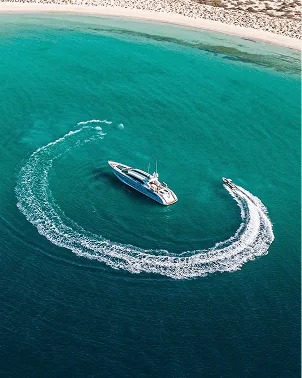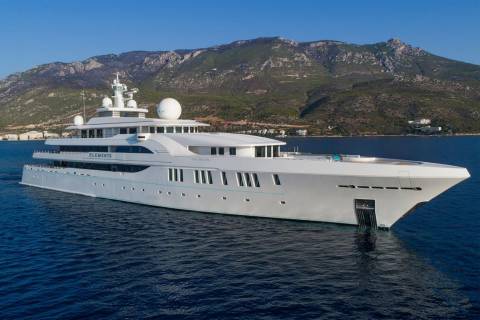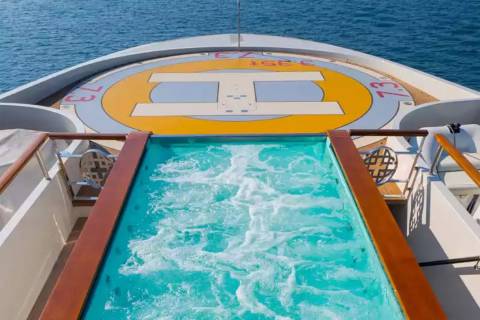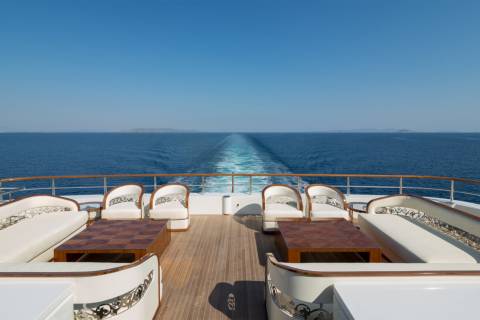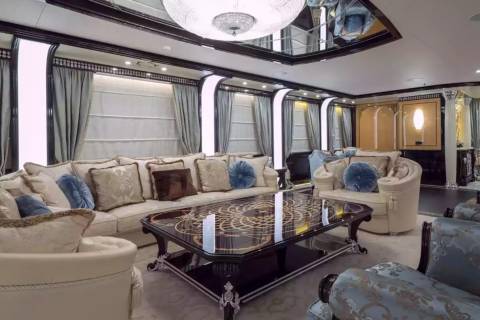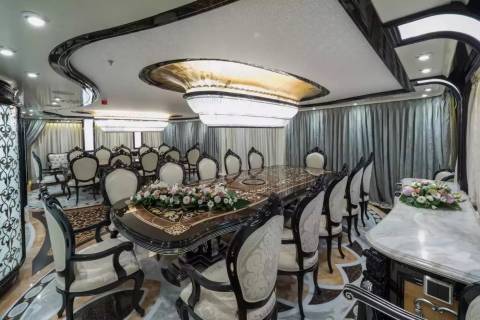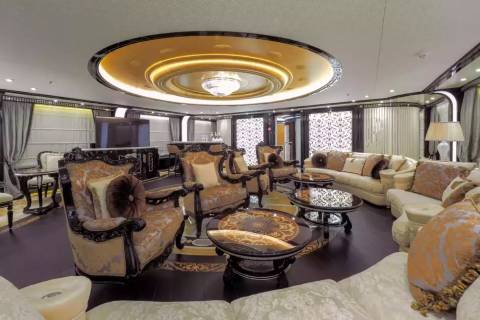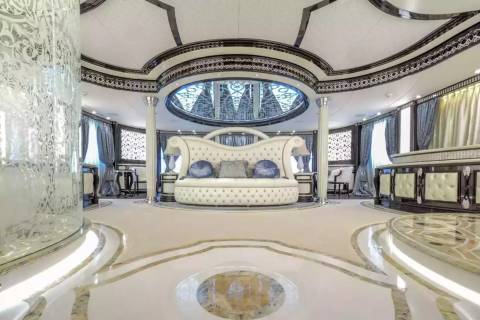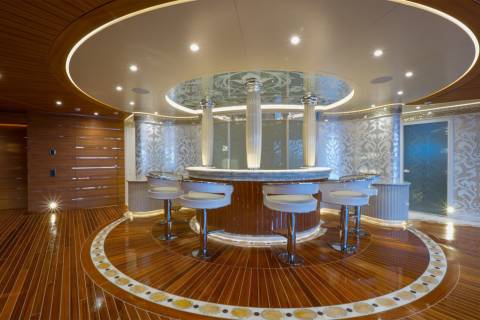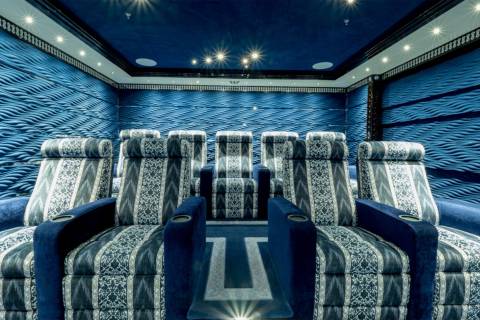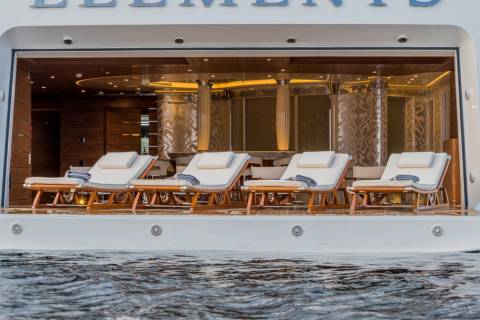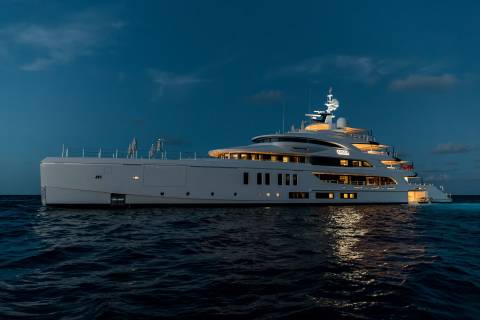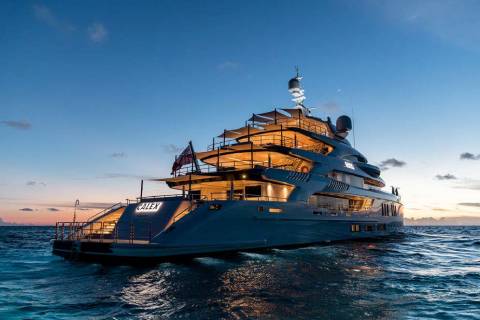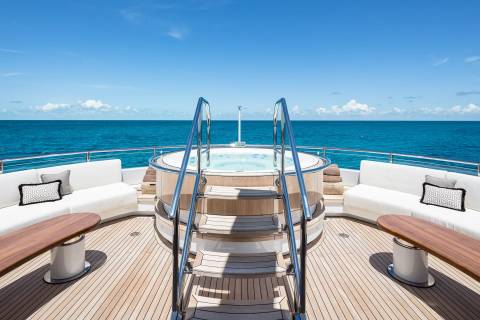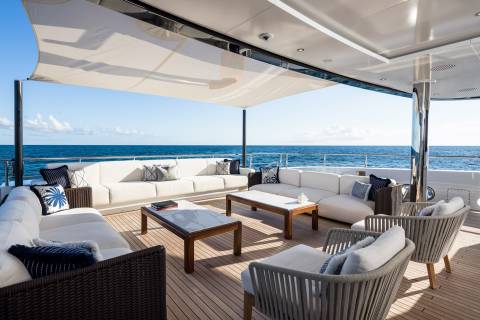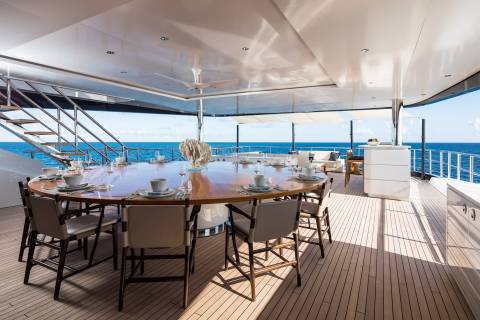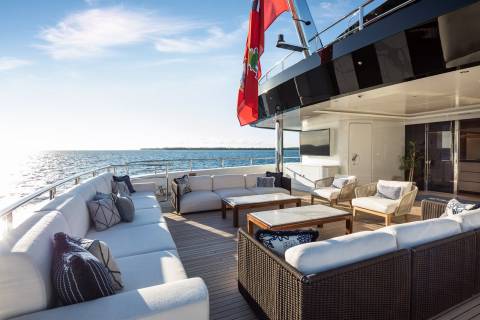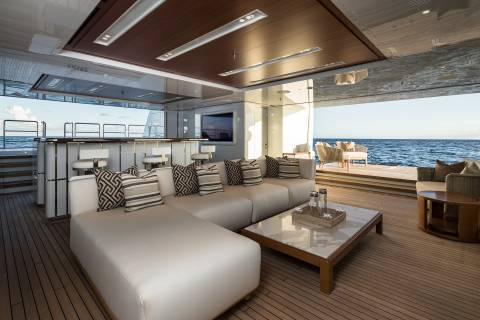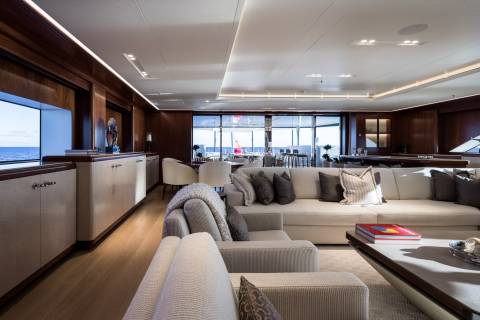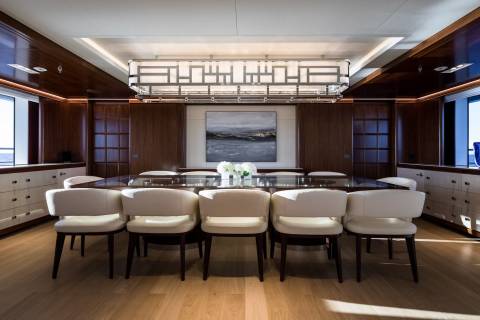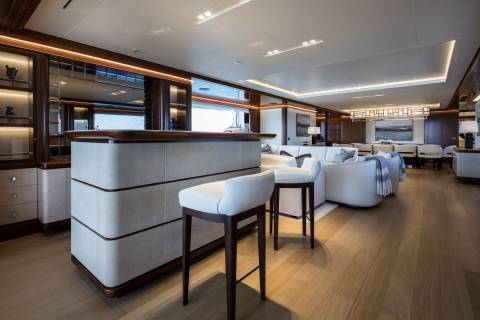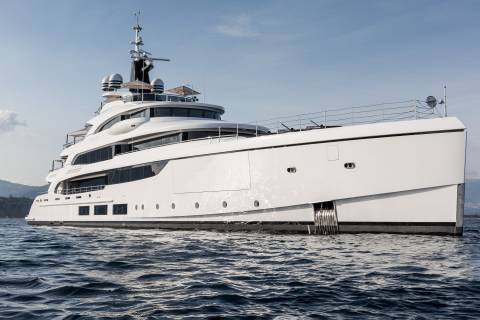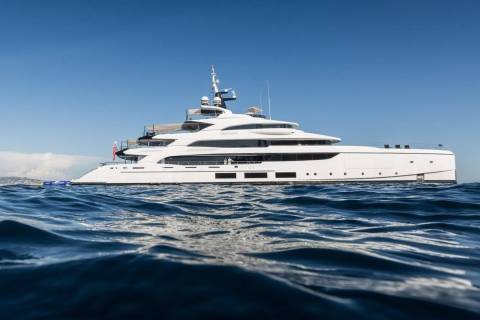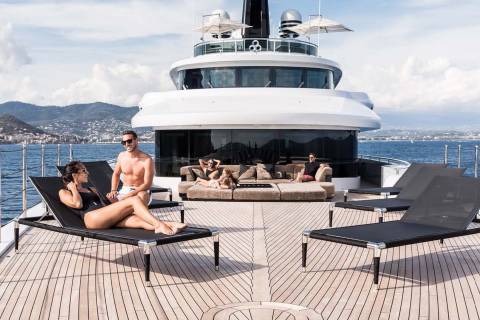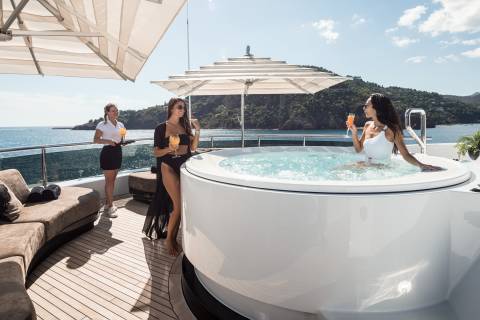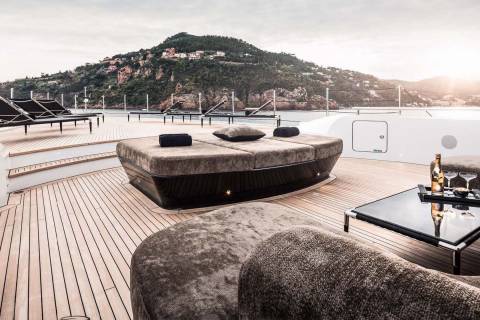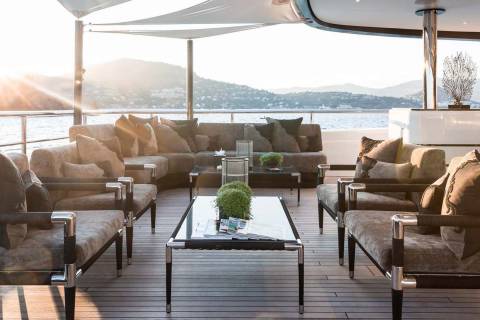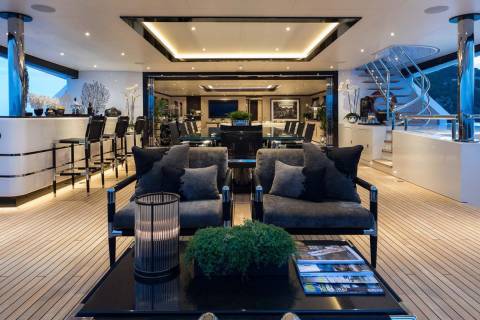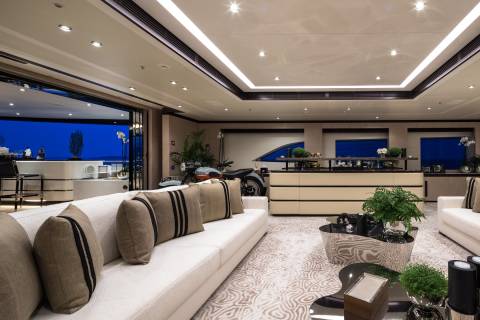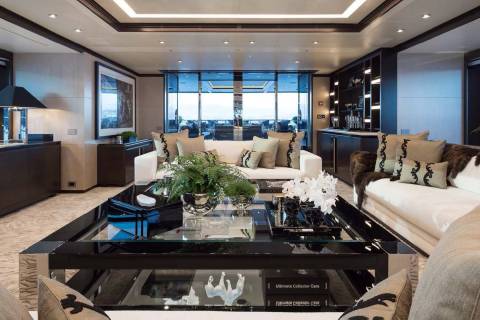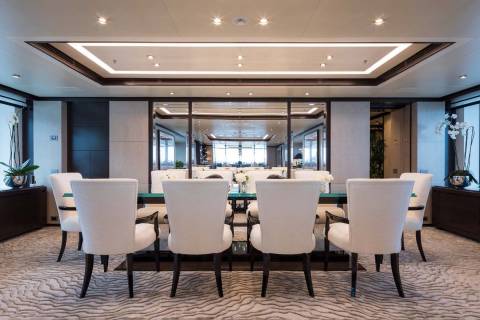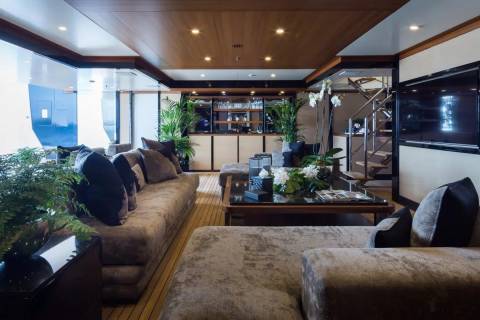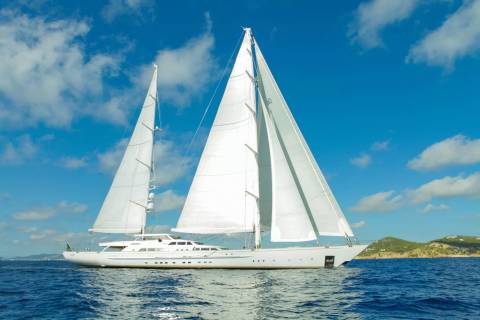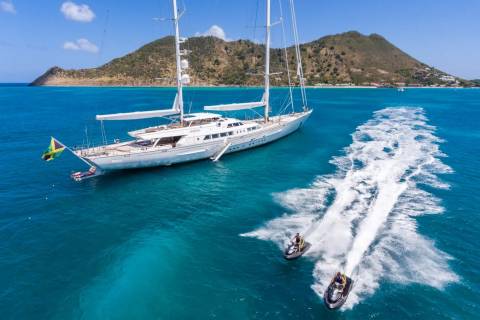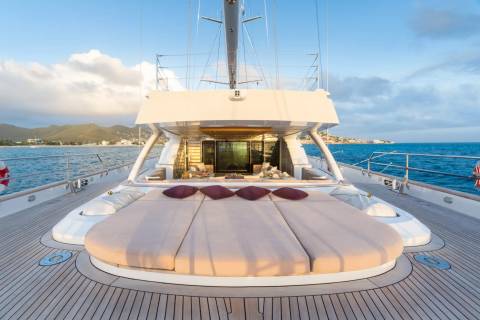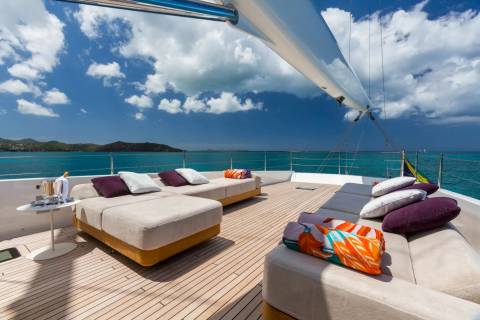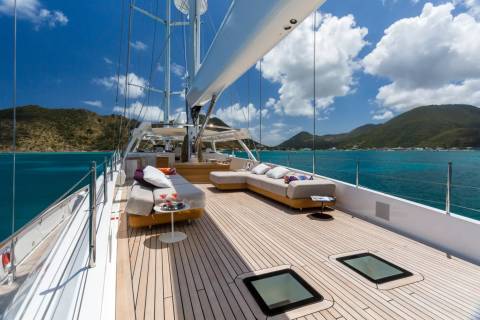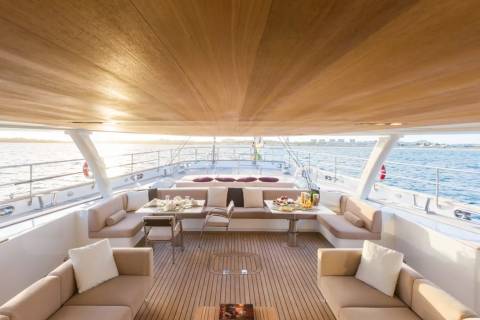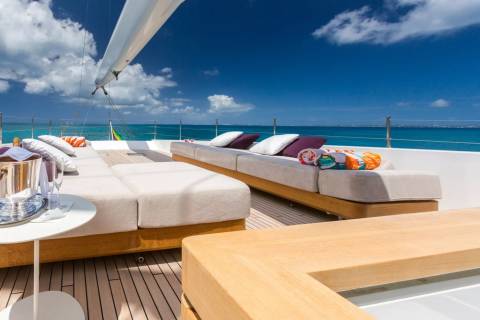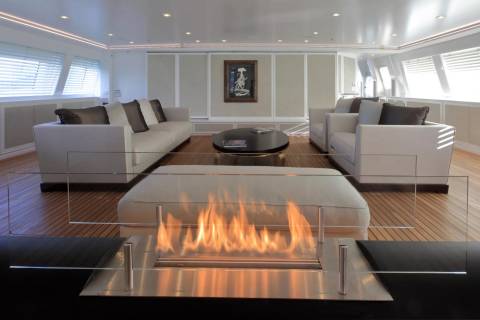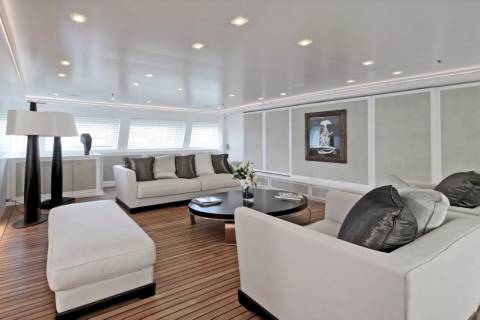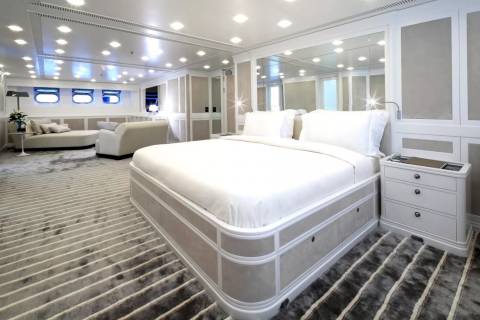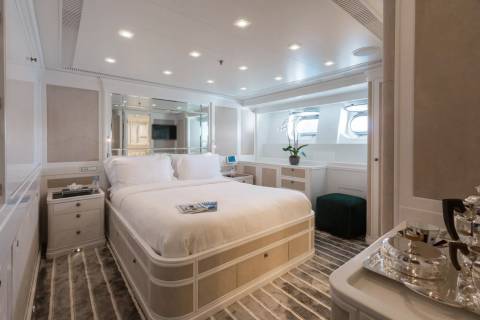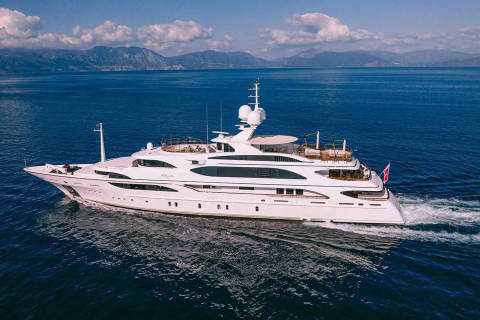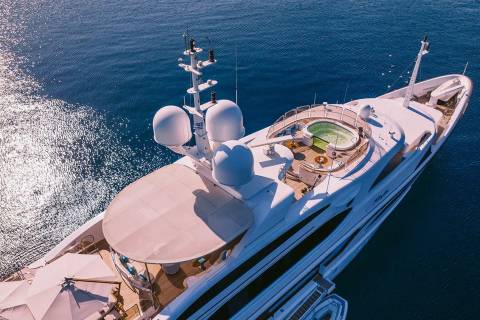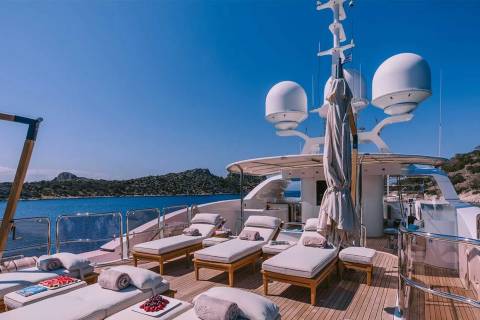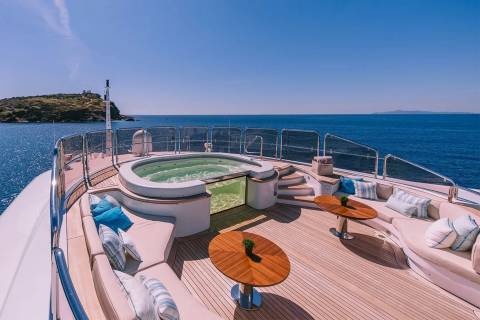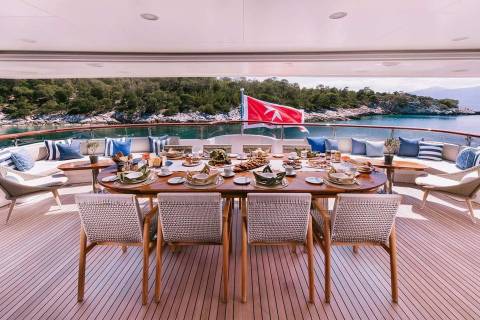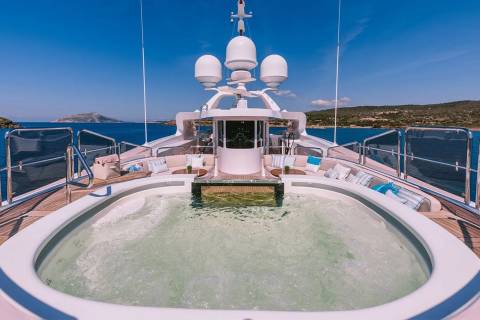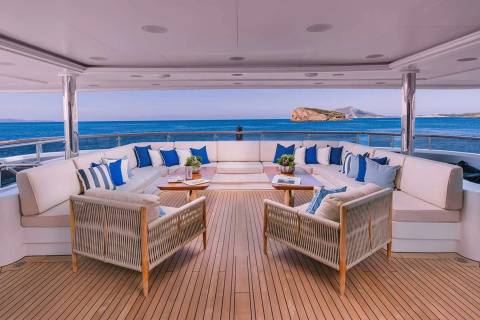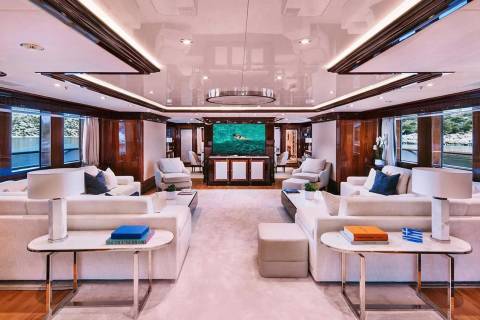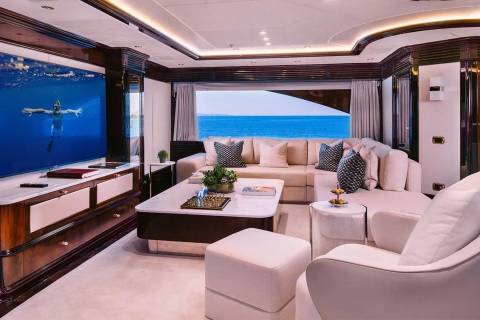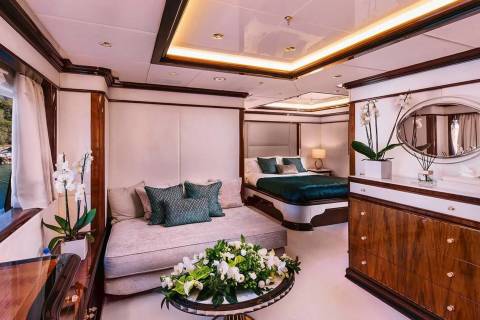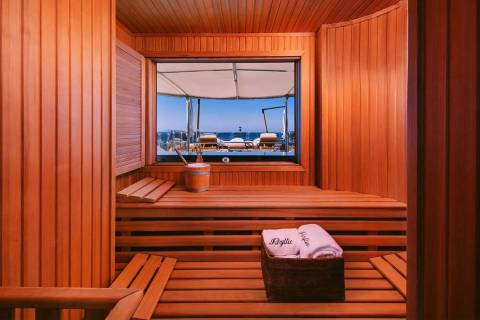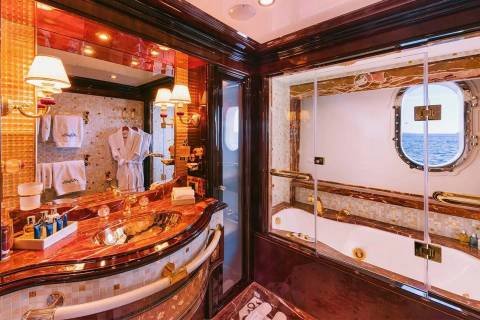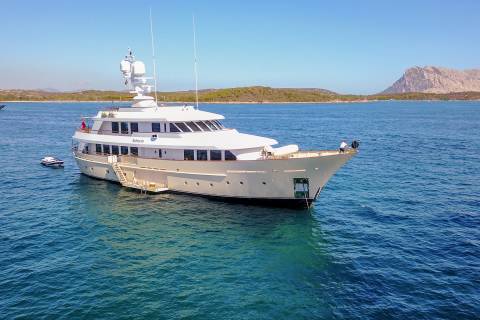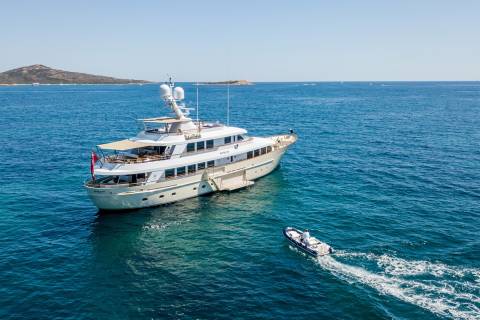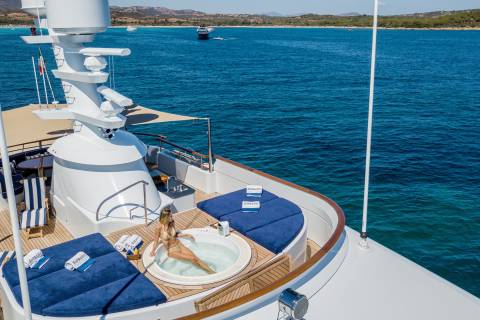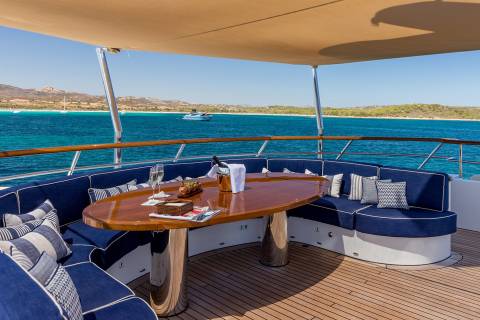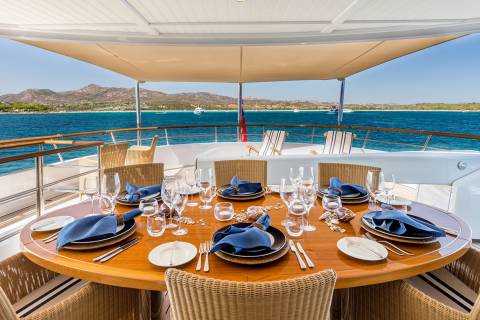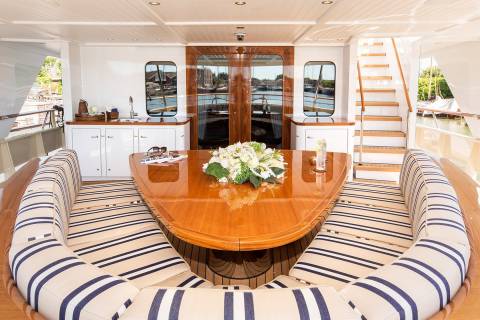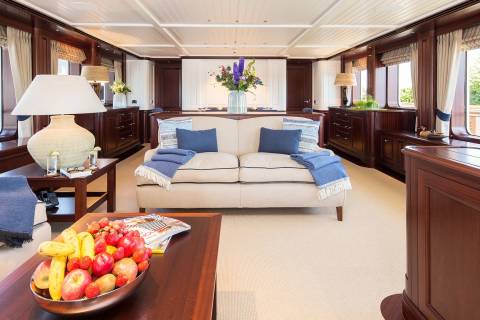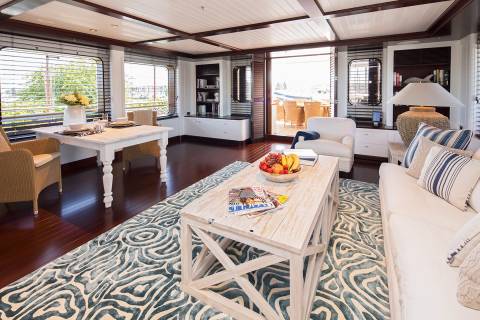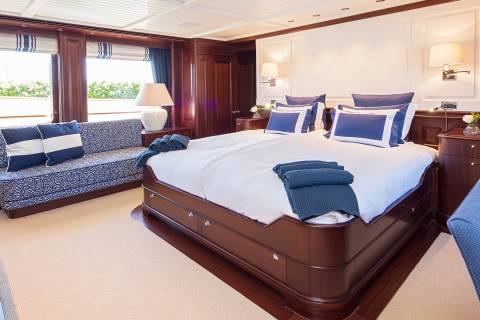Length
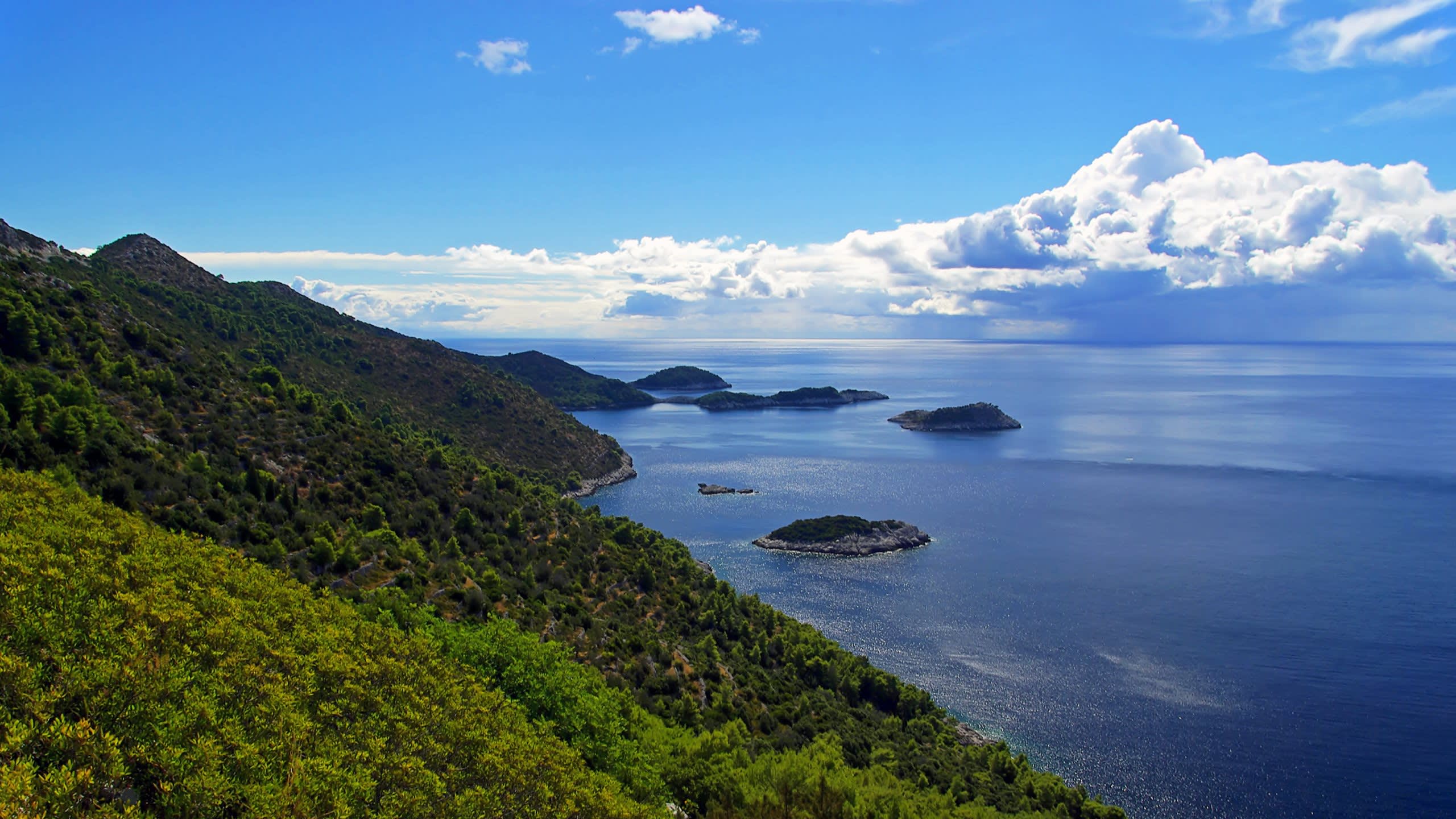
Red Rooftops. Blue Oceans.
Venice to Sveti Stefan. Explore ancient ruins entangled with modern delights in a geographically diverse setting guaranteed to wow all who visit.

Venice to Sveti Stefan. Explore ancient ruins entangled with modern delights in a geographically diverse setting guaranteed to wow all who visit.
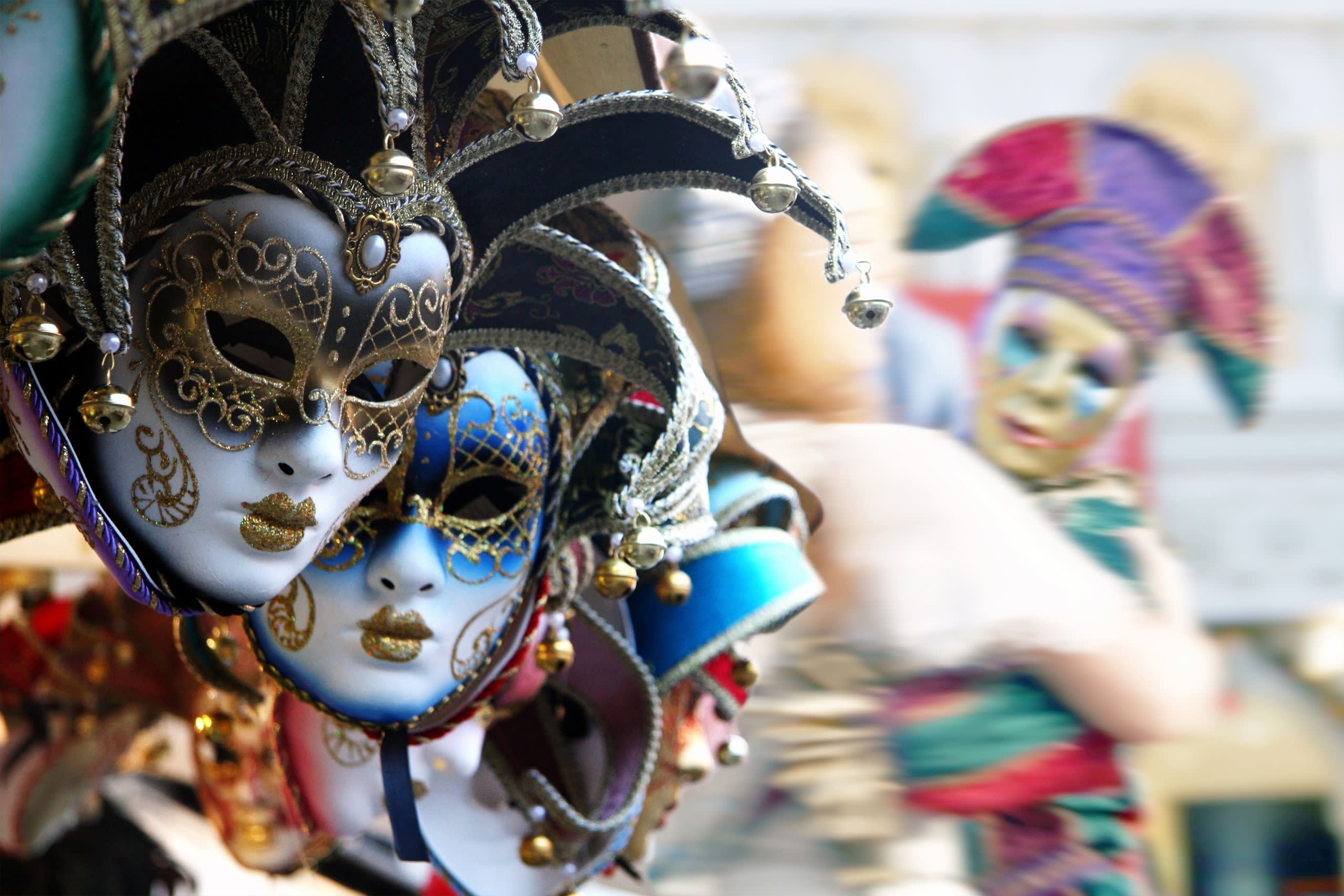
Day 01
Venice is a jewel-like cluster of 117 islands scattered across an Adriatic lagoon. Its historical centre, rising majestically from the marshy seabed, defies gravity. Handsome façades trim its labyrinth of canals. These waterways hum night and day, constantly criss-crossed by a parade of gondolas, motorboats and pleasure craft. This enchanting corner of Italy is a floating fairyland.
Marco Polo, Antonio Vivaldi and Giacomo Casanova – respectively Italy’s most renowned explorer, composer and lover– were all born in this watery kingdom. Venice is blessed with enough international art, world-class opera and romantic vistas exquisite to make even these worldly personas weep with joy.
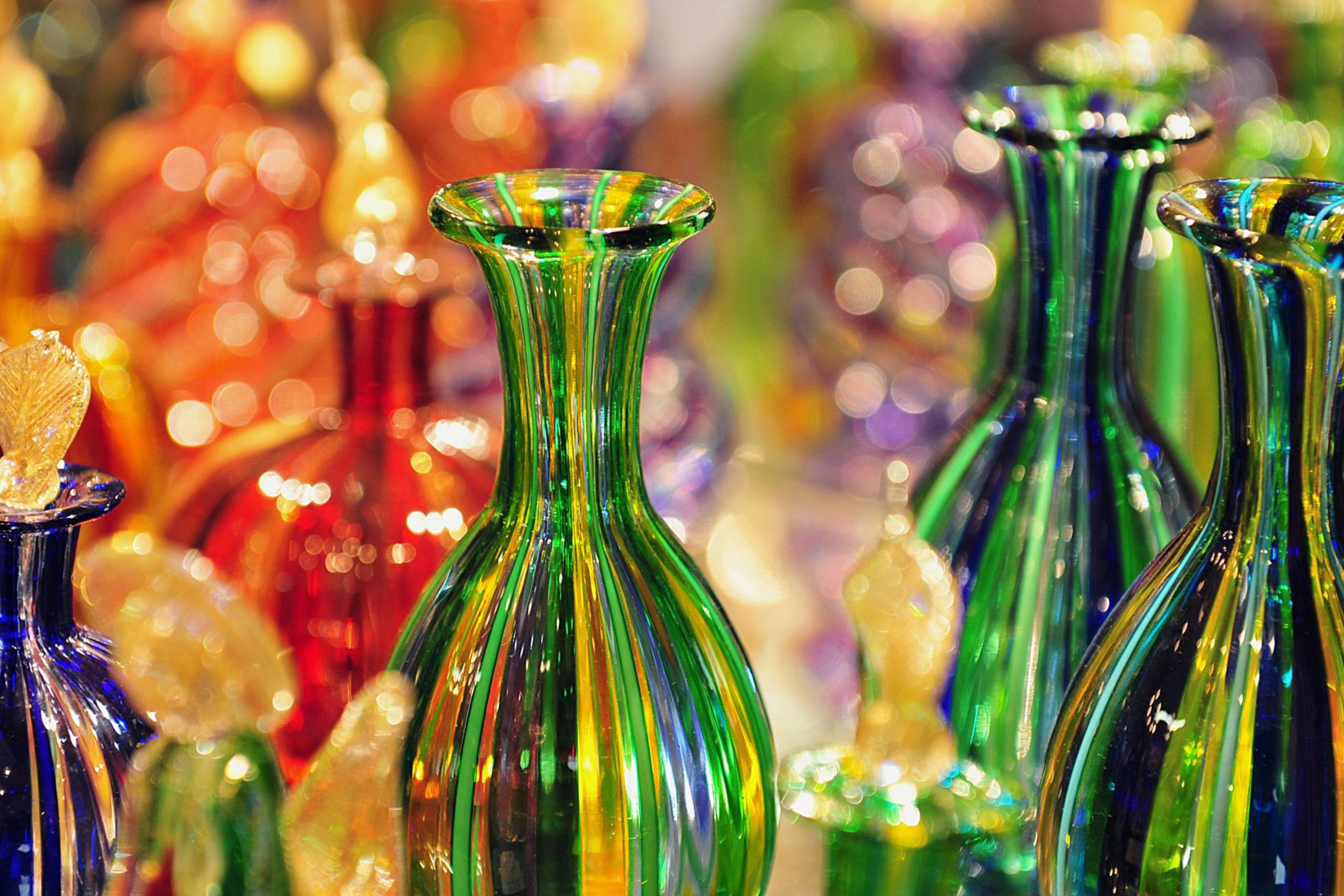
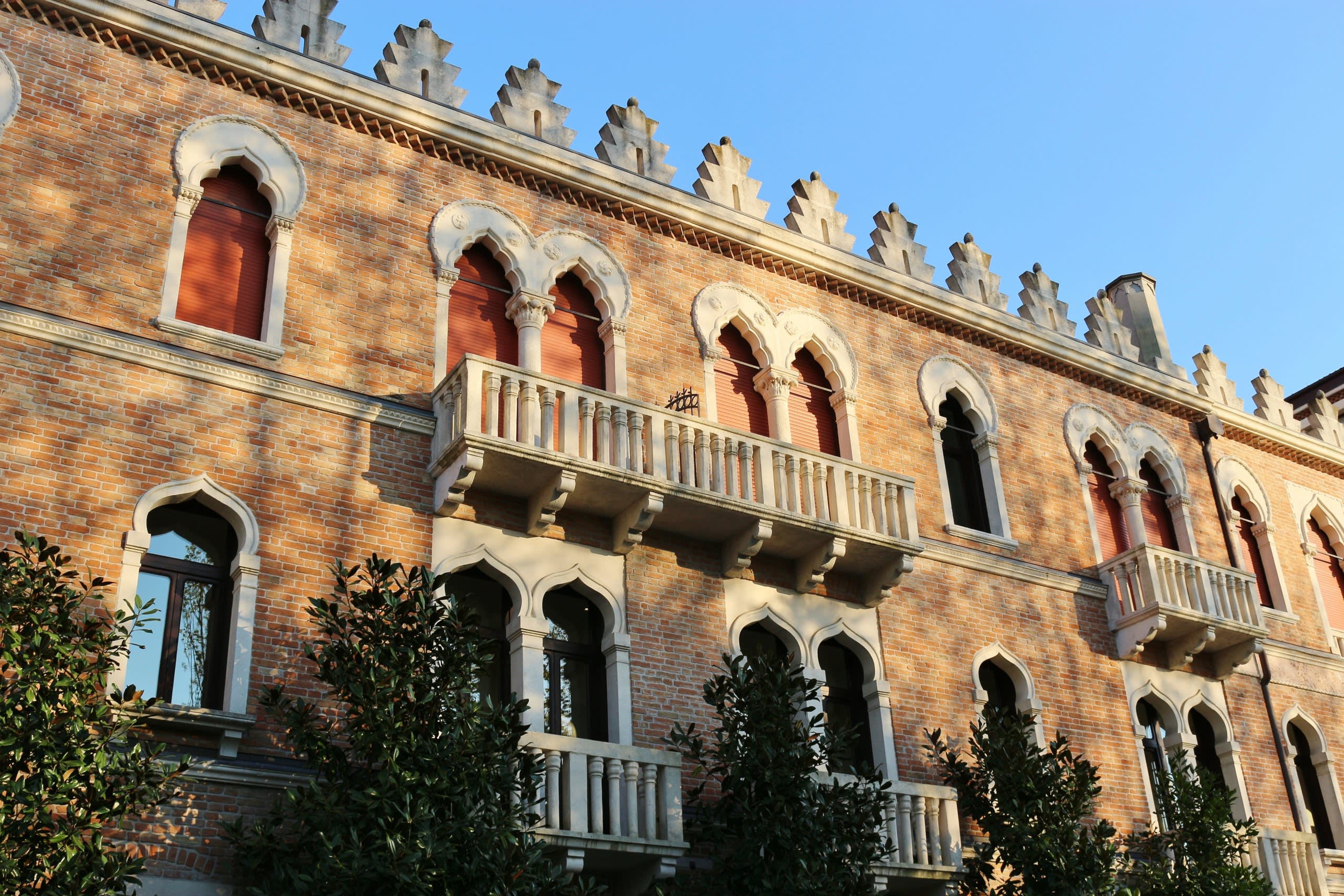
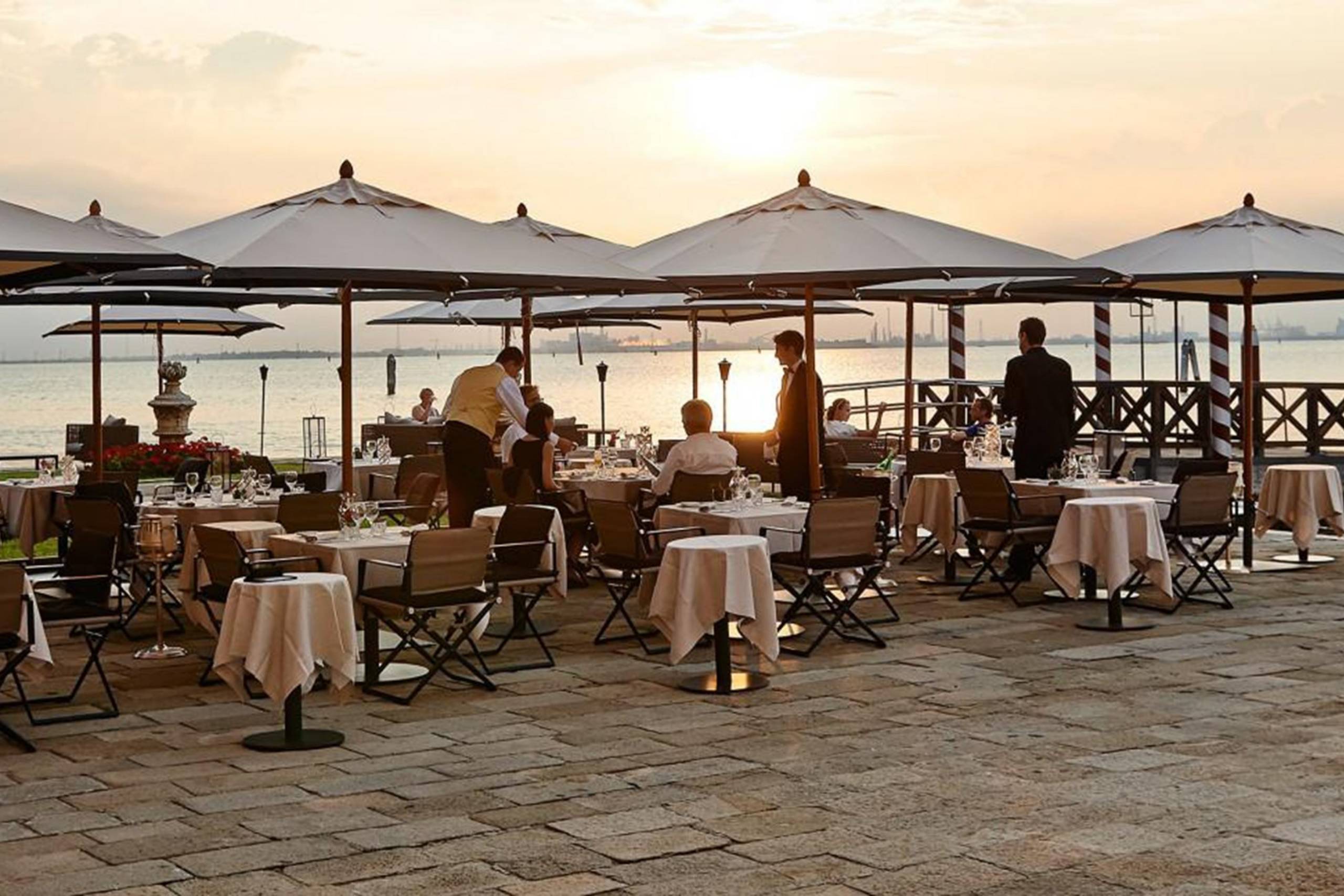
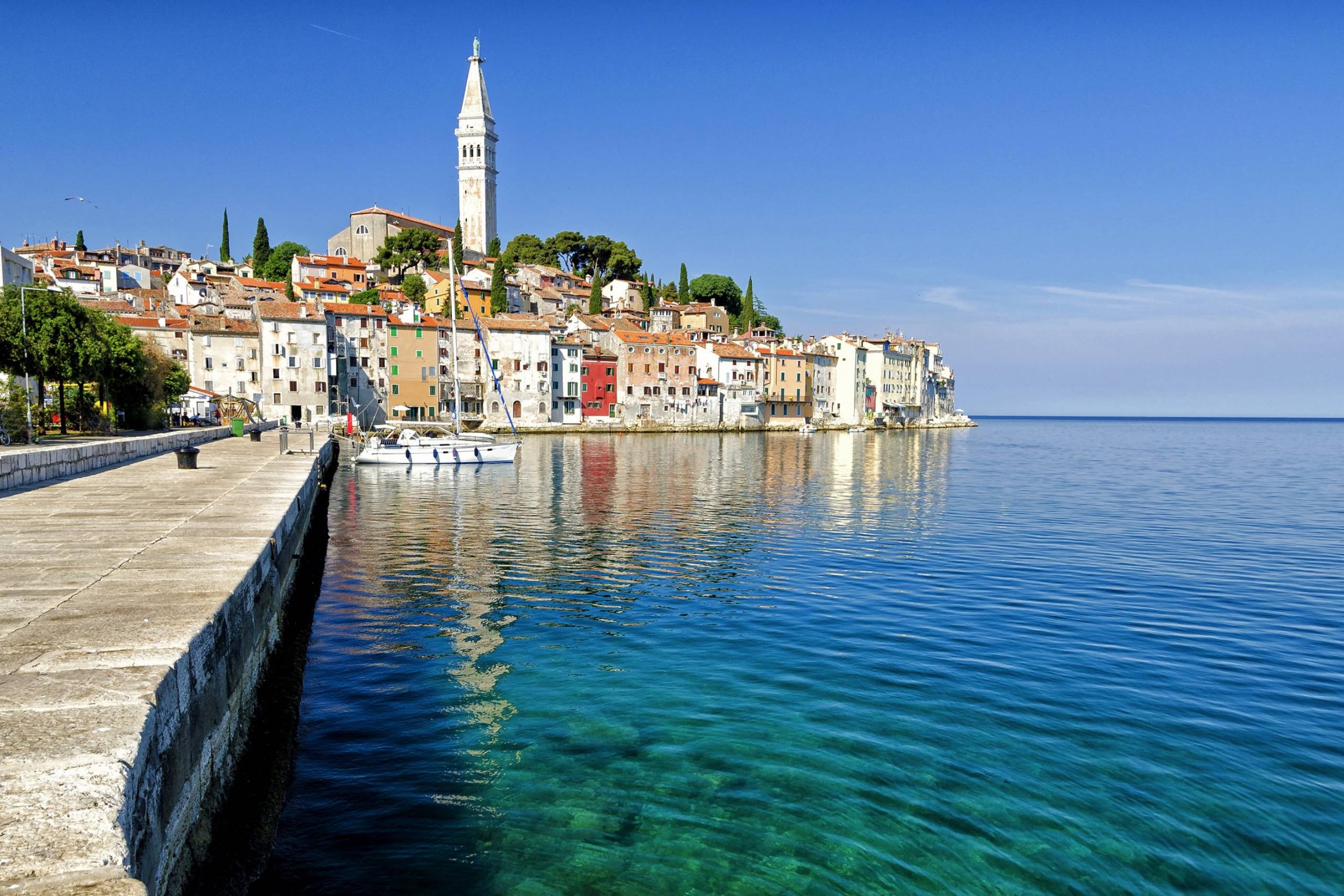
Day 02
Rovinj was essentially Italian until 1947. Today it remains a cosmopolitan Venice on the Adriatic Sea. Its waterfront promenade – the Riva – is one long procession of gelaterie. Its gastro-speciality is frutti di mare.
The coastline around Rovinj crumbles into an archipelago of 22 island gems. And just north lies nature’s gift to superyacht guests. The 35km-long Limska Fjord cuts into Istria like a watery blade. The coast is an undulating green carpet of oak and ash, but it’s what lies under the waves than counts. The oxygen-rich estuary is watered by a score of rivers, and its stocks of oysters, scallops and mussels are second to none.
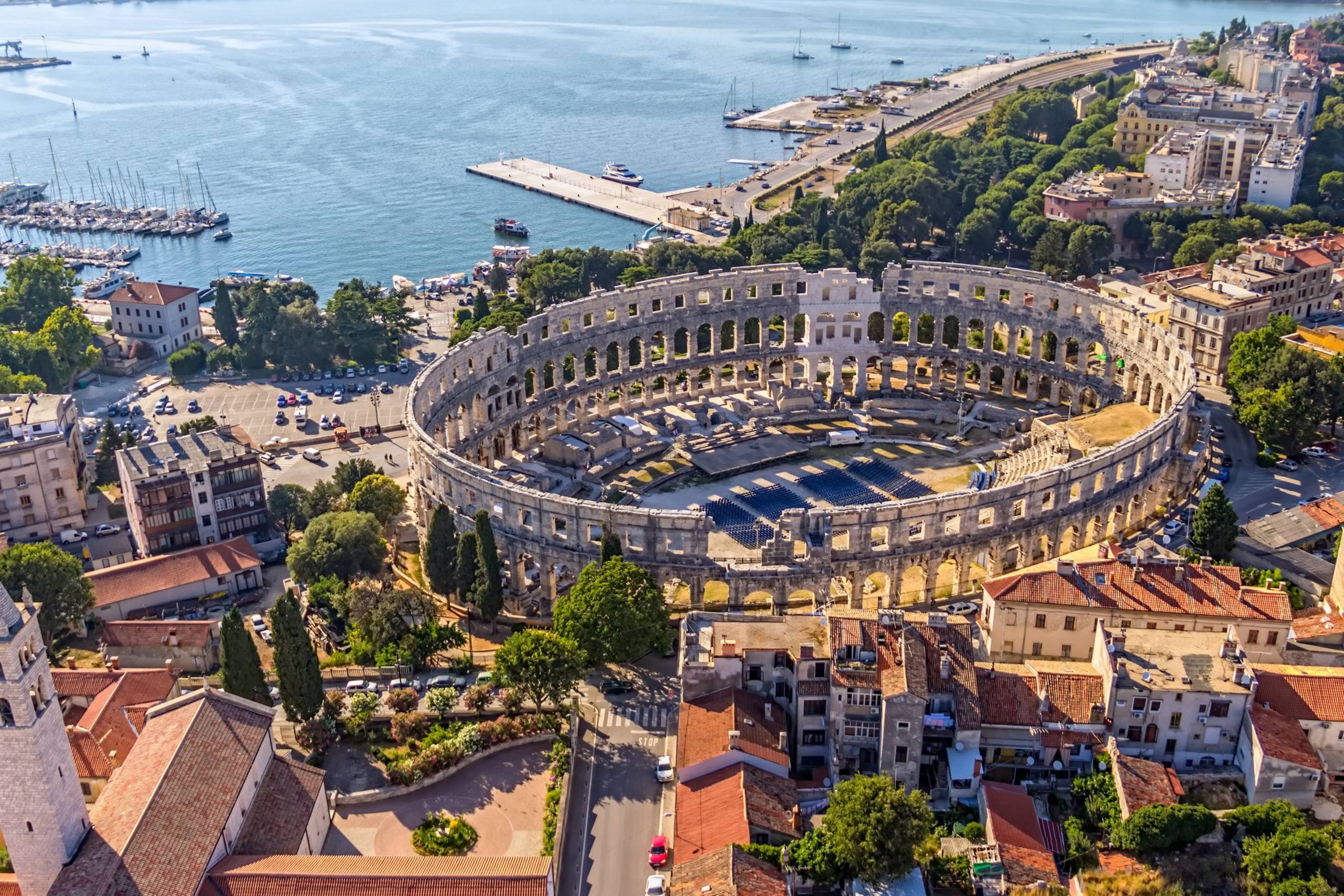
Day 03
Pula has been the capital of Istria for 2,000 years. And it shows. One of the world’s greatest Roman amphitheatres commands this romantic seaside town. Thankfully, summer entertainment has switched from gladiators, lions and bears to alfresco opera, theatre and film. The Temple of Augustus forms the axis of Pula’s seafront promenade. The monument - and surrounding gelaterias - are as good as any in Rome.
A short sail from the Pula shore, in the Brijuni Islands translucent beach-backed bays surround an archipelago covered with forests and forts. Roman emperors holidayed here. A century ago Viennese business magnate Paul Kupelwieser established a casino, a yacht harbour and Croatia's first golf course. In the swinging 1960s Gina Lollobrigida and Sophia Loren turned the archipelago into Croatia’s St Tropez.
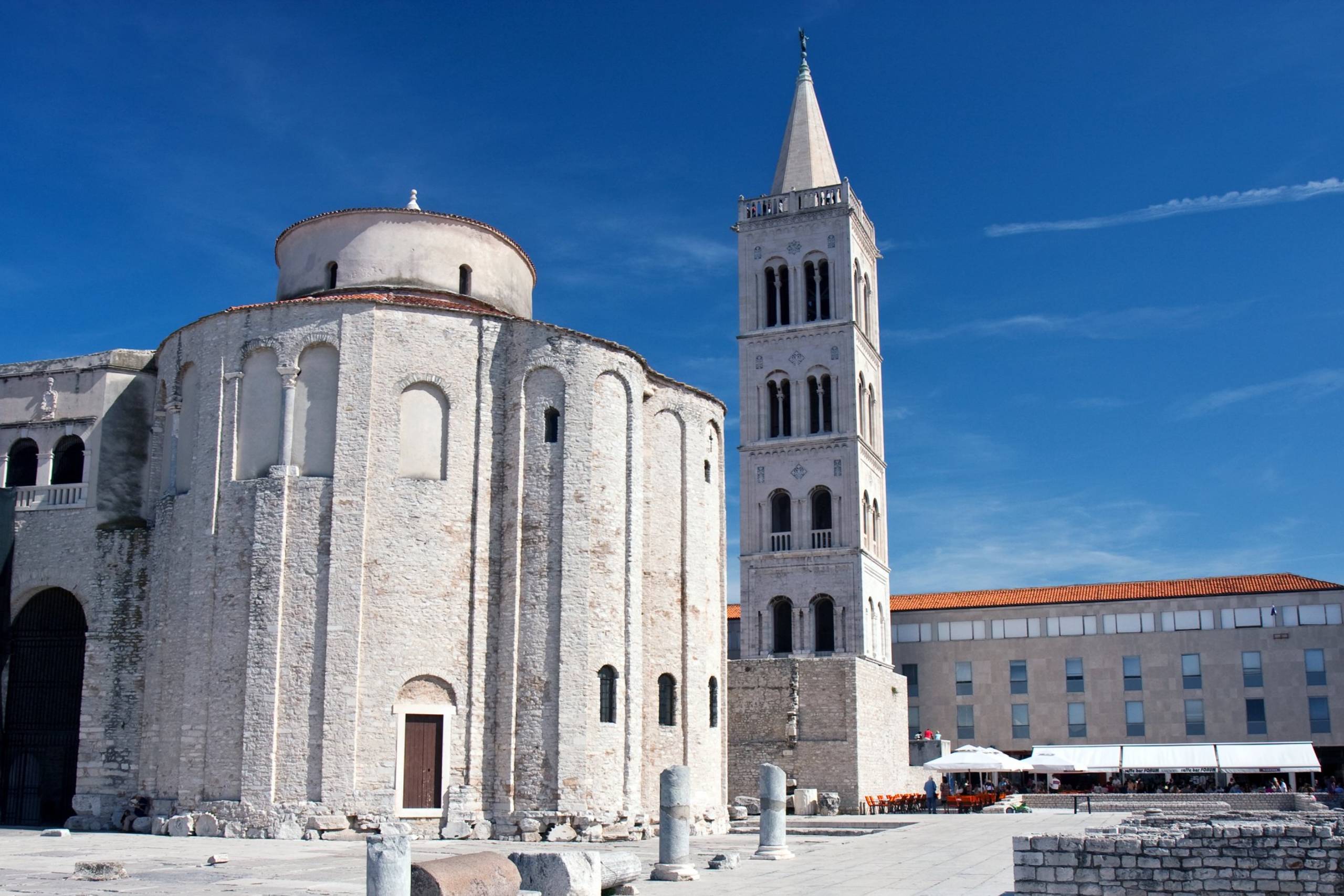
Day 04
The prize for the prettiest city in Dalmatia goes to Zadar. Its waterfront promenade is lined by belle epoque mansions. And it has more restaurant terraces than Venice. Inside Zadar’s old town, the streets are literally paved with marble. here the port’s 3,000 years of history shine through. Roman columns rise next to Romanesque churches. Shops selling local wine and jewellery sit next to branches of La Furla and Max & Co.
Offshore lies an Edenic island chain. Molat is a maquis-covered wilderness for hikers and bikers. Ulgjan is a famed for fishing and olive oil. Further out to sea, Silba is smart, arty and car-free. Premuda boasts undersea caverns and an eerie shipwreck. Neighbouring Olib is an island speck surrounded by sand.
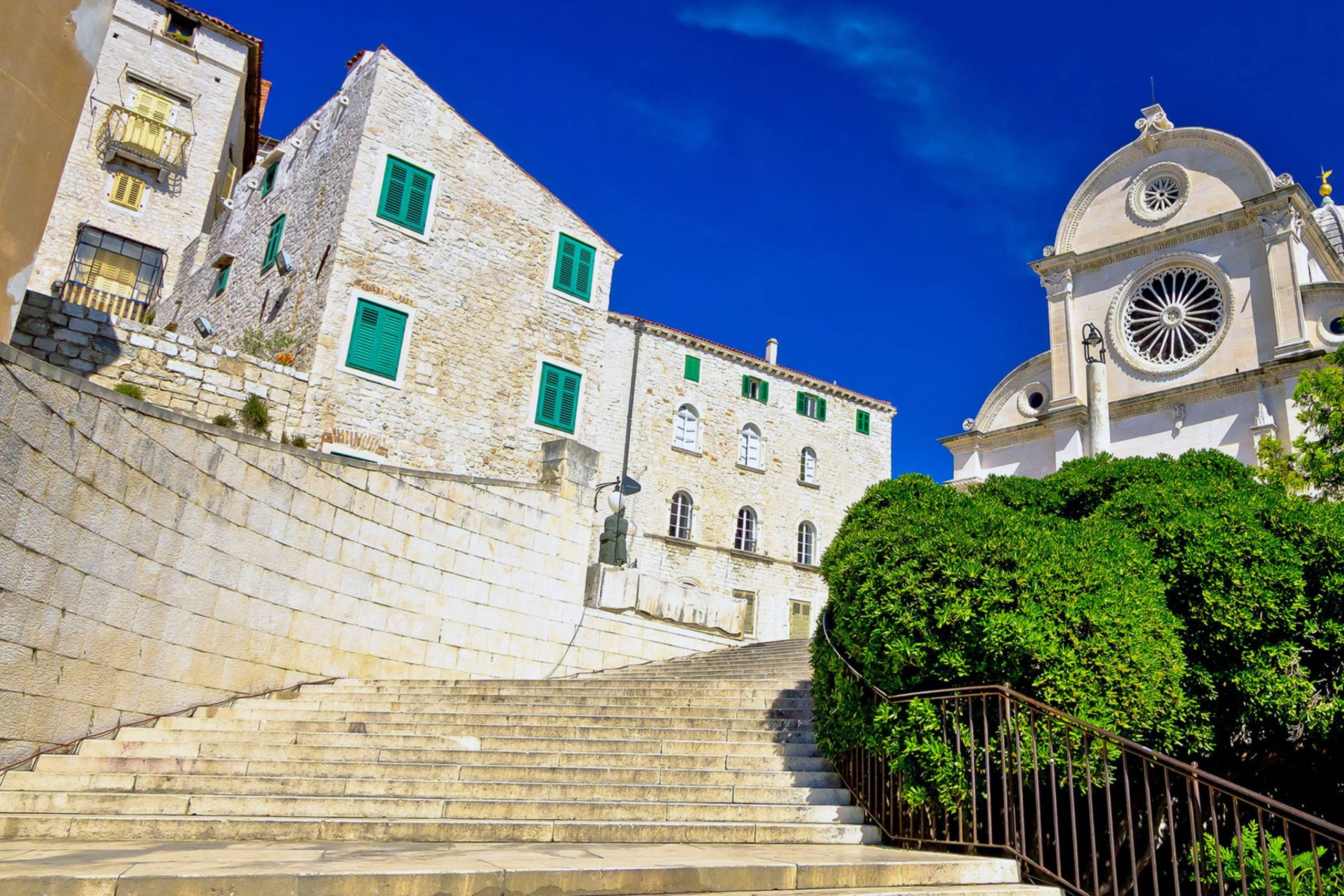
Day 05
Šibenik has the luckiest location in all Dalmatia. In times past, the town grew wealthy from the watermills in the nearby Krka National Park. Its honey-hued streets are richly lined with marble stones, smiling cherubs and a UNESCO-protected Cathedral. A saunter up to the ruined St Anne Fortress is a perfect stretch for sea legs. The view spans over the 220 forested islands in Šibenik’s bay.
A loop of island idylls stretches from Šibenik to Zadar. The clear blue bays of Žut make for a Robinson Crusoe escape. Car-free Kaprije offers local wines and olives, plus slow-cooked lamb raised in the maquis-covered hills. Krapanj is famed for fiery rakia, while Zlarin is renowned for squid and shellfish baked in vine leaves.
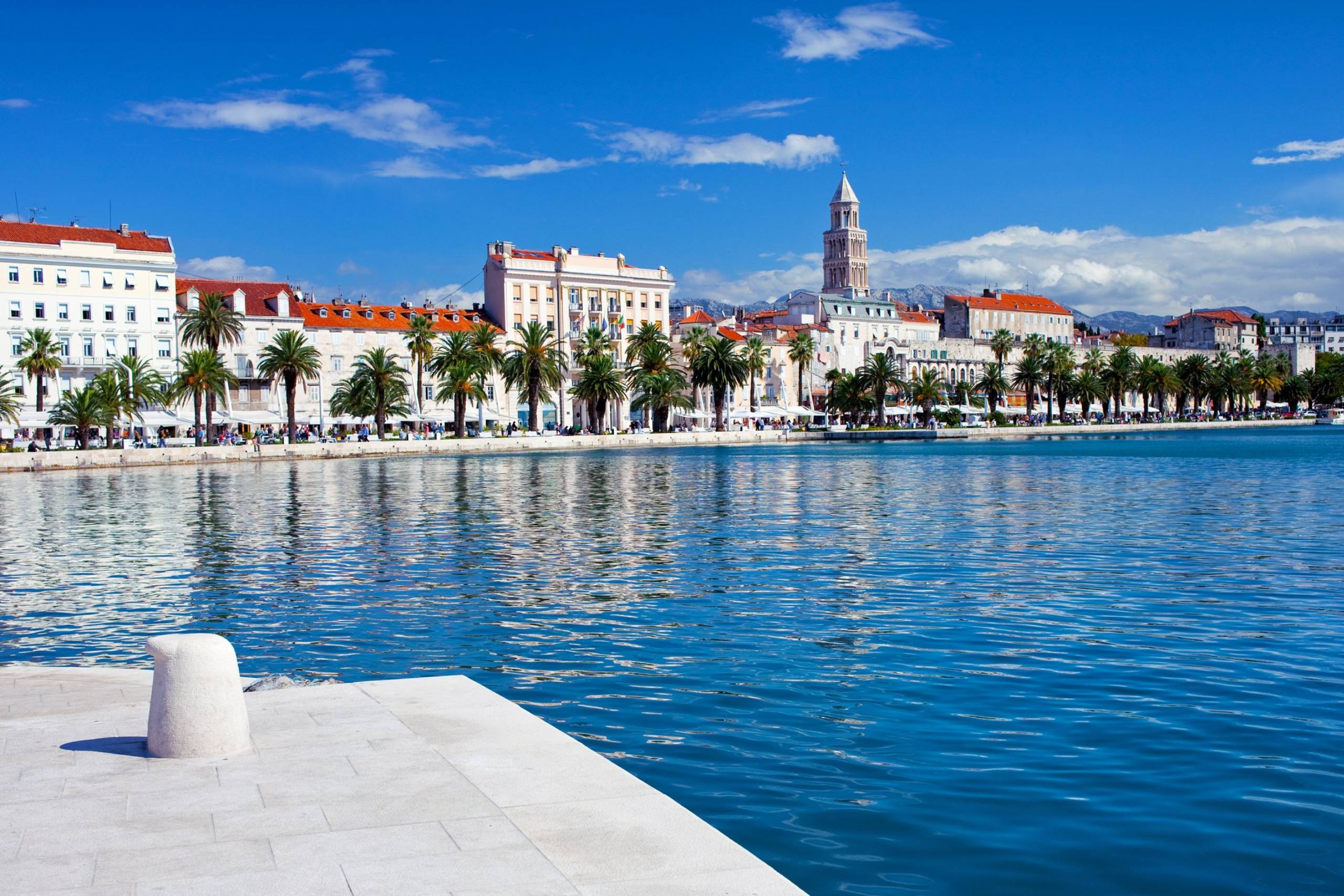
Day 06
When Roman Emperor Diocletian built his retirement home, he chose Dalmatia’s sunniest and most sheltered bay. His white marble mansion now forms the historic heart of modern Split. Over 100 restaurant terraces radiate out from the Roman ruins, rendering Croatia’s second city one big pavement café. Superyacht parties have been known to maintain an alfresco bar table for hours at a time, as members hit boutiques, markets and galleries before casting off.
Diocletian’s garden now hosts Split’s daily market. Here 200 local stallholders sell cherries, honey and legs of prosciutto to superyacht chefs moored in the bay. Offshore, the island of Solta is awash with olive groves and orchards of citrus, vines and figs. Its 60km of coastline is a blue-green mosaic of bays, beaches, cliffs and creeks.

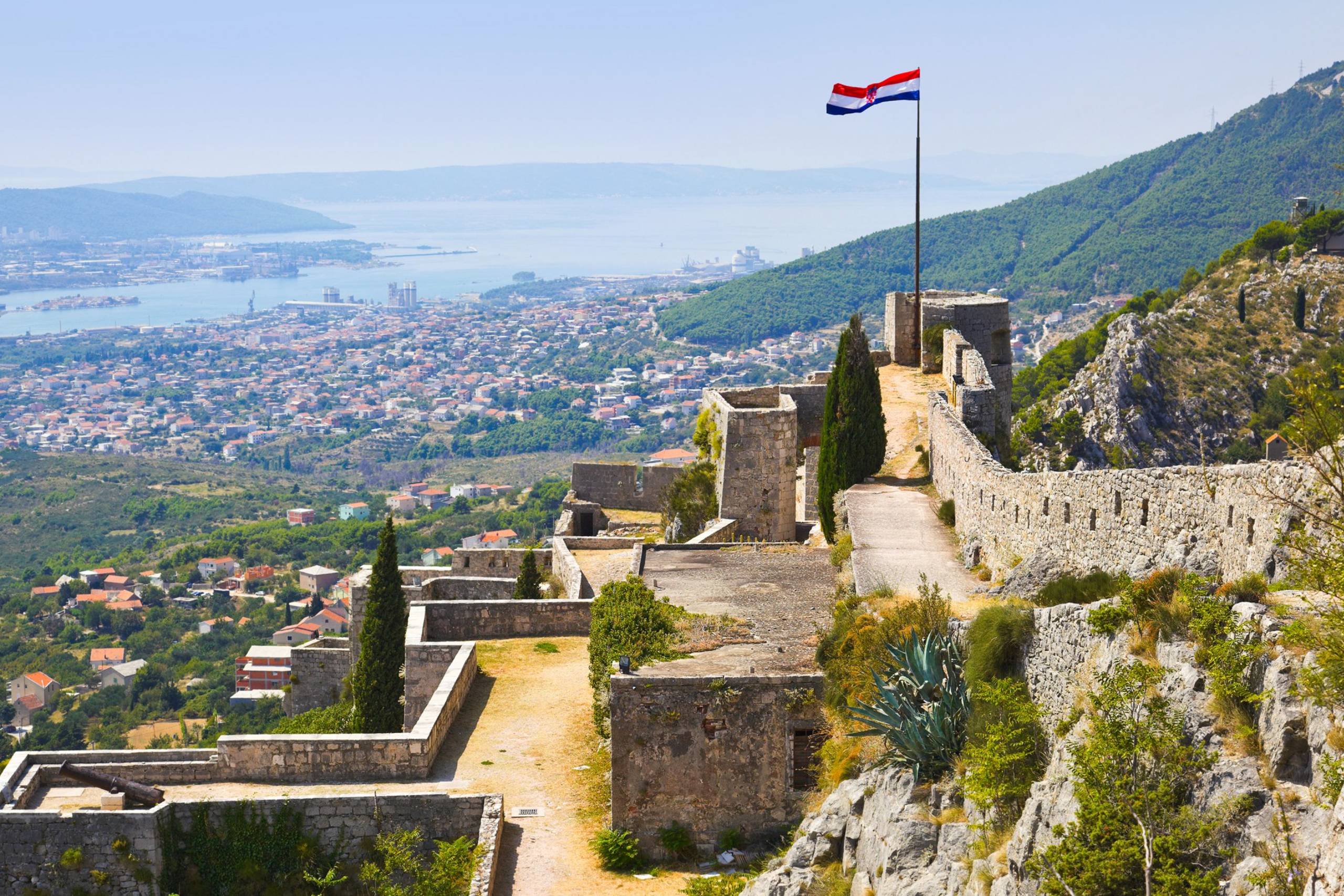
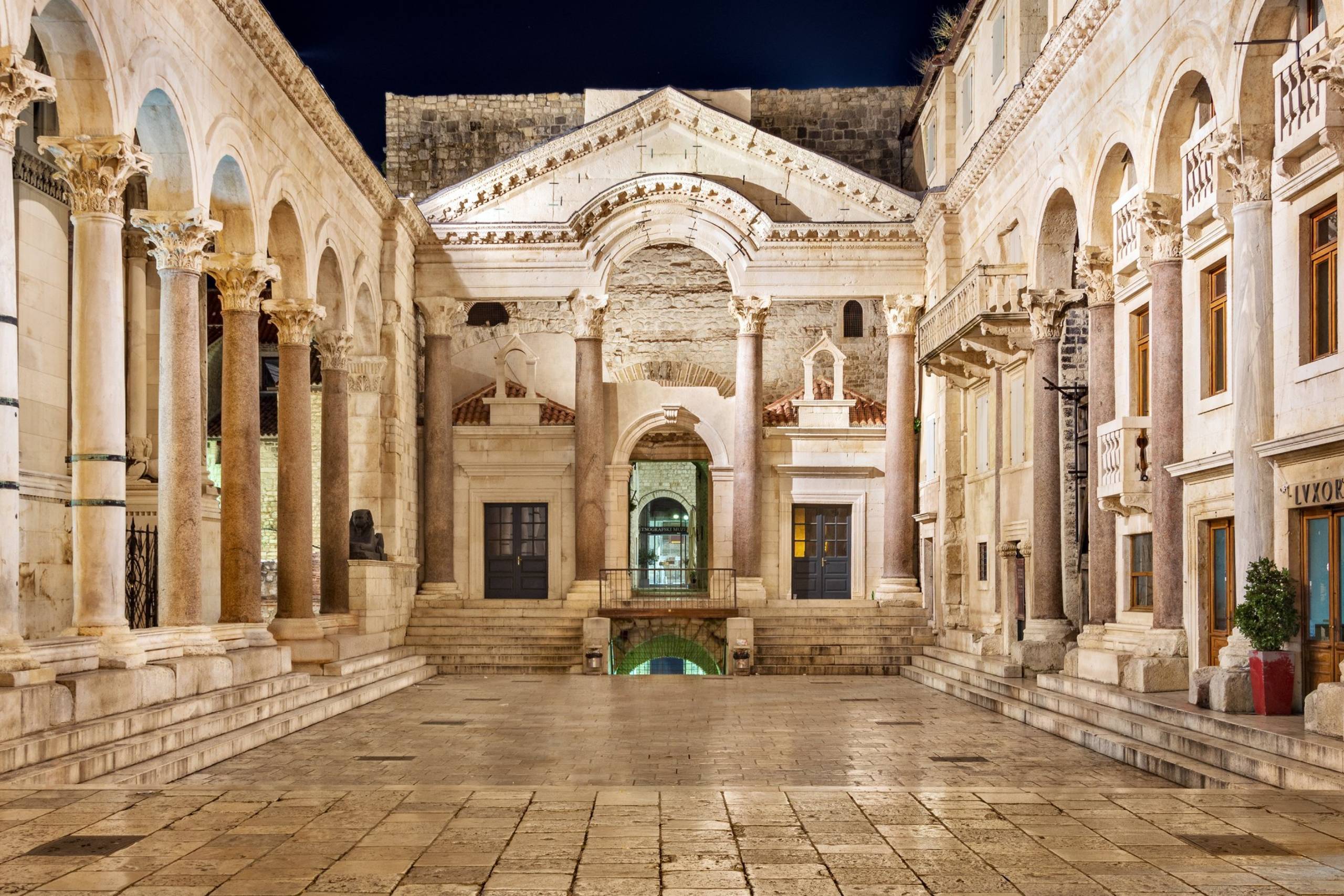
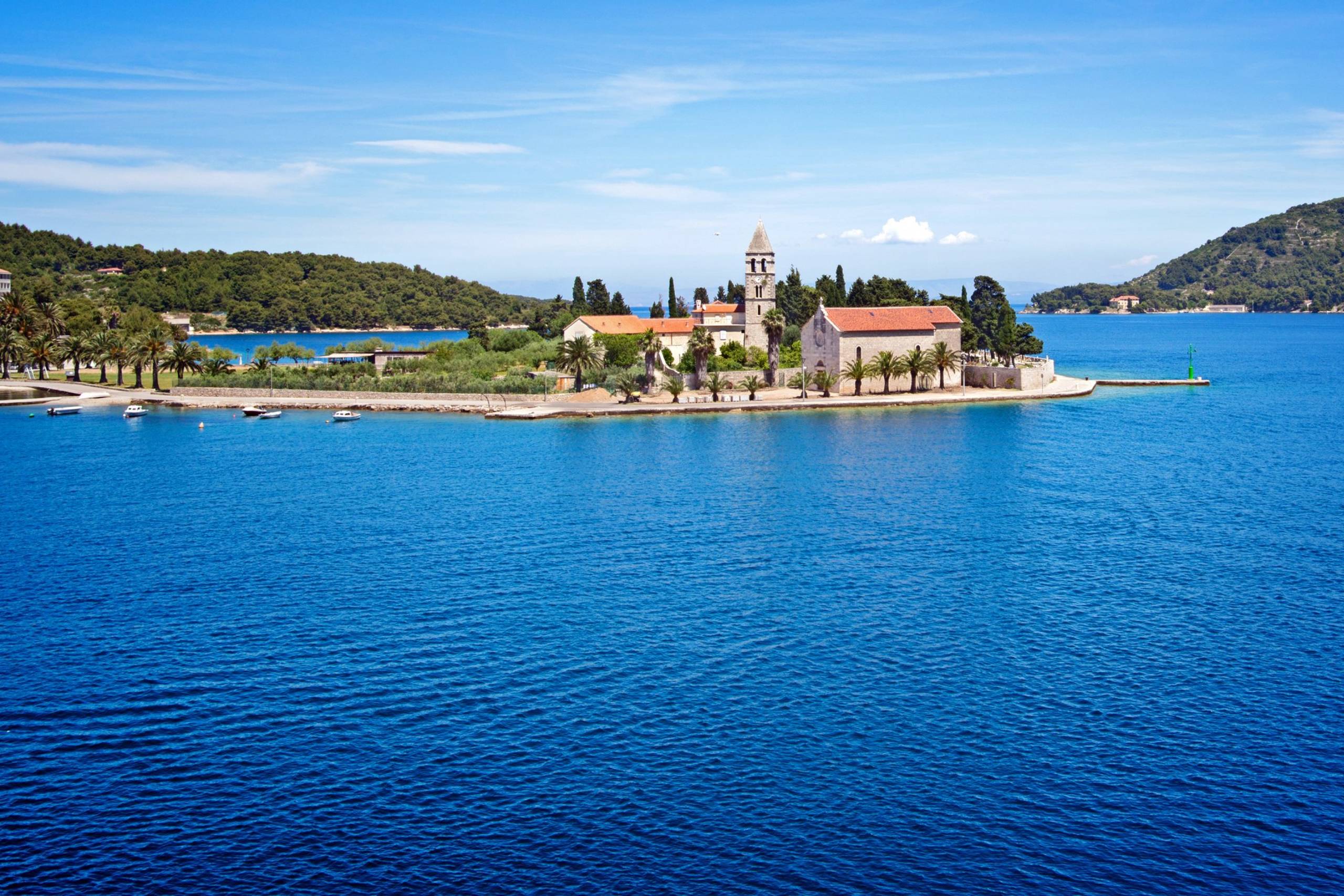
Day 07
Halfway between Croatia and Italy, Vis is a heavenly cradle of culture, seafood and fabulous wine. A single daily ferry runs this far out into the Adriatic, so only visitors with their own yachts frequent these crystal clear waters.
With patrons of such calibre, Vis’s restaurants are gourmet sensations. Val serves scorpion fish and local lobster under a lemon grove. Maître d' Goran is unerringly tight-lipped about his celebrity clientele.
More isolated still is the island of Biševo. It hosts only 11 residents, a handful of vineyards and one very cool cave. Take the tender to the Blue Cave around lunchtime and dive right in. Rays of sun, ethereal shadows and a white coral seabed combine in a surreal lightshow.
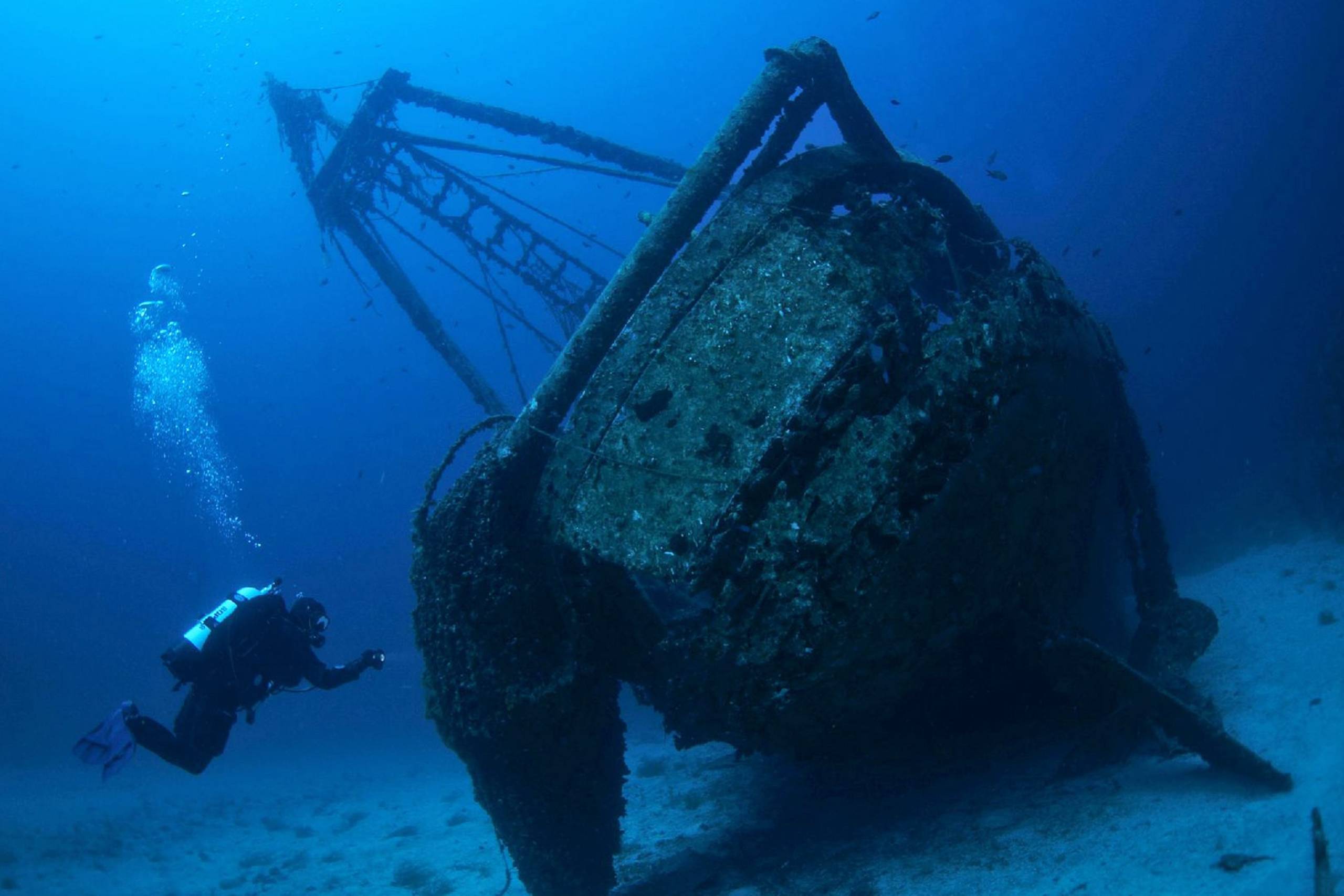
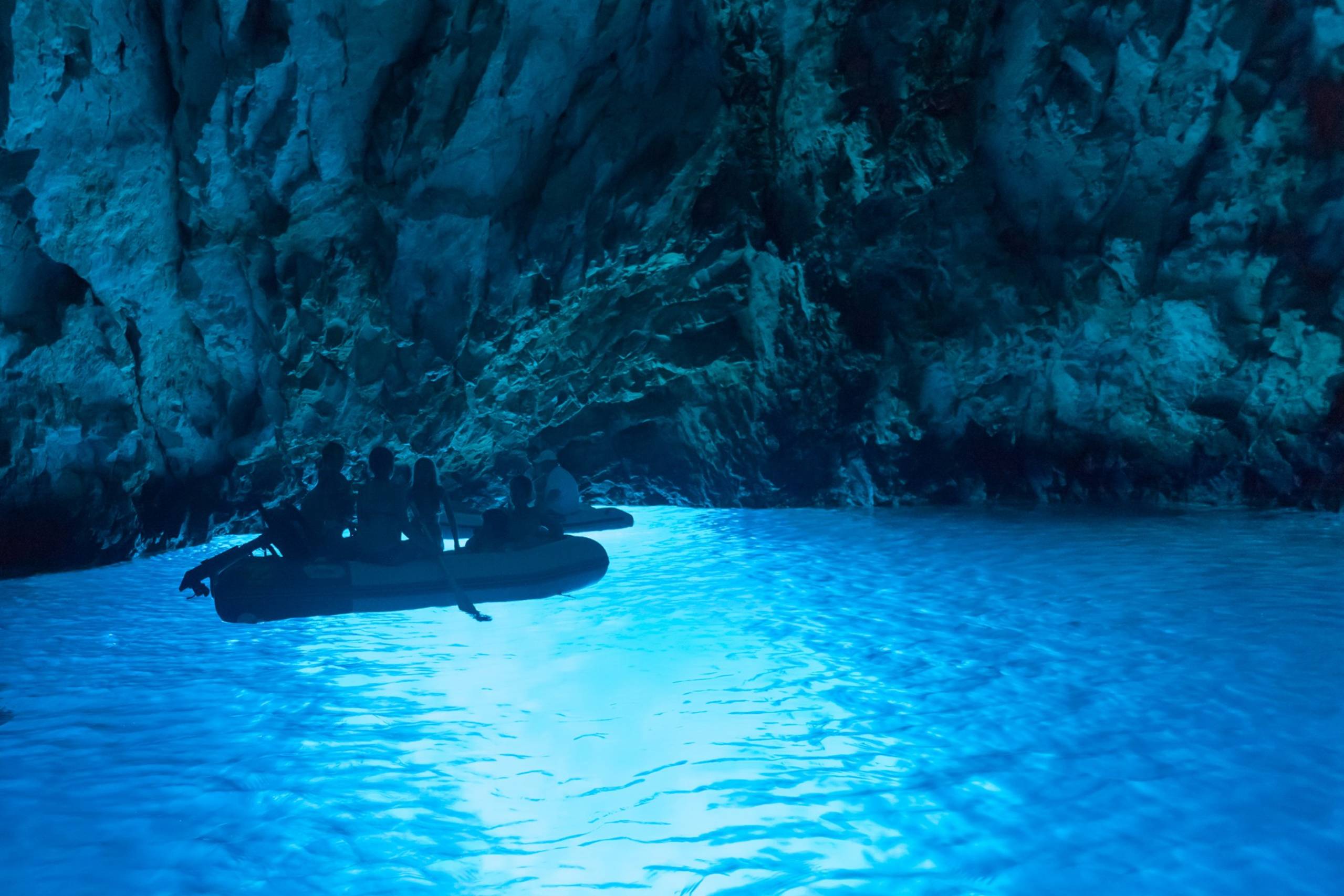
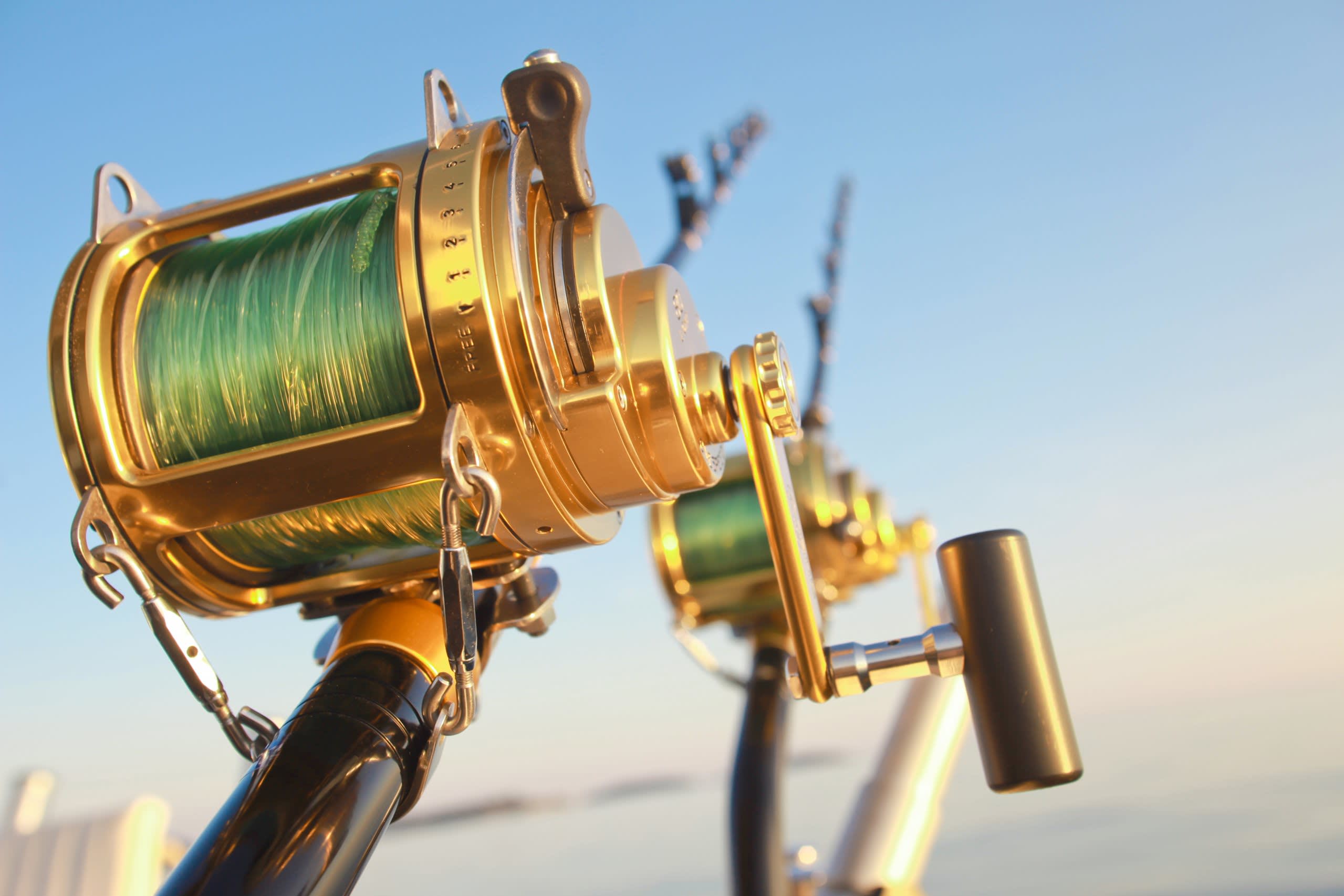
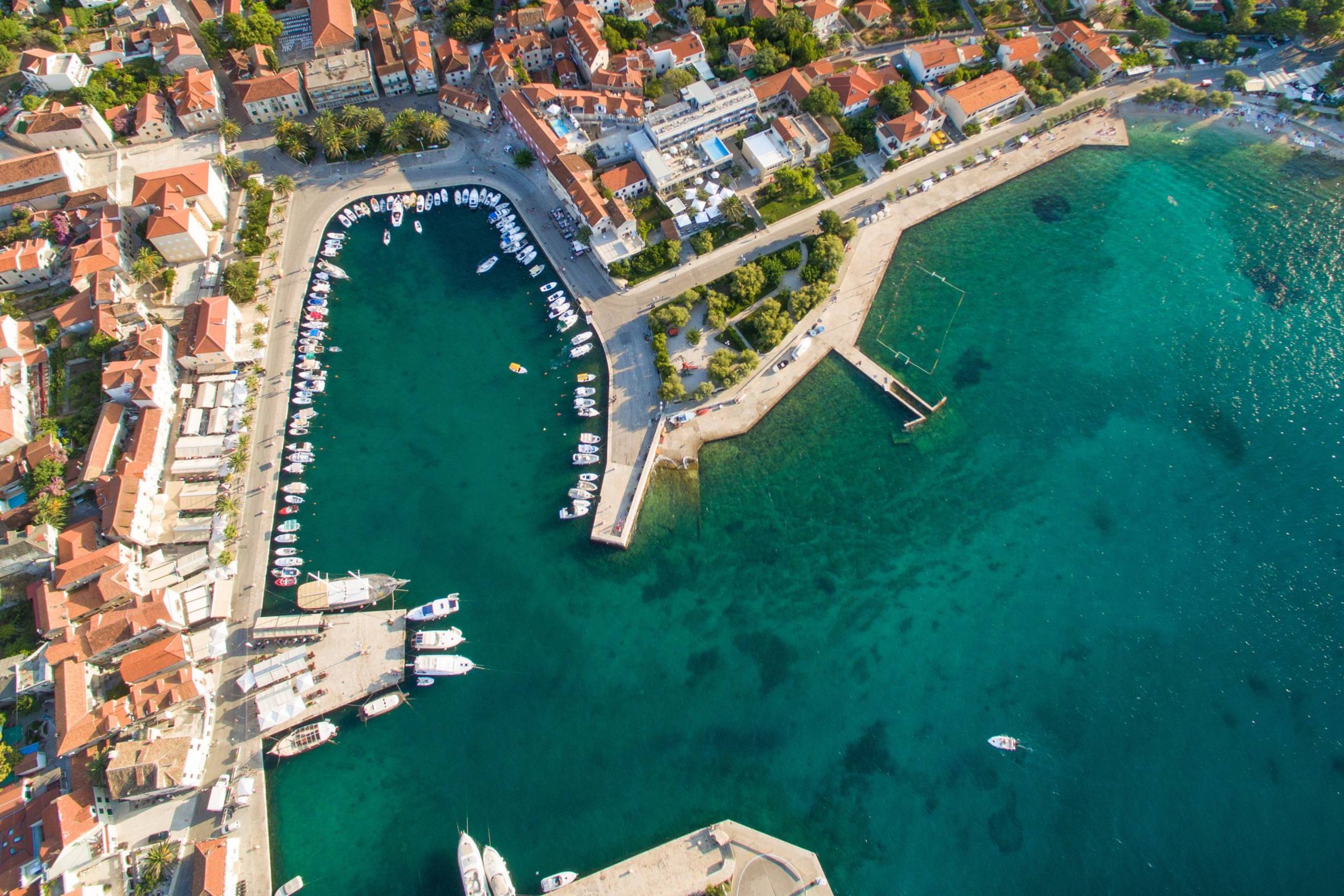
Day 08
The largest of Dalmatia’s islands, Brač is best known for Zlatni Rat, its glorious ‘Golden Cape’. Croatia’s most famous beach is a triangular 500m peninsula that juts out from the pine-clad coast. Its white pebble shore forms a striking contrast with the translucent turquoise waves.
What beats the beach is the postcard-perfect panorama from above. At 780 metres, Brač’s Vidova Gora peak is the highest in the Adriatic, offering vistas over Zlatni Rat as well as the nearby island of Hvar. The descent on foot is equally alluring, where olive groves and rippling vineyards tumble back down the sea.
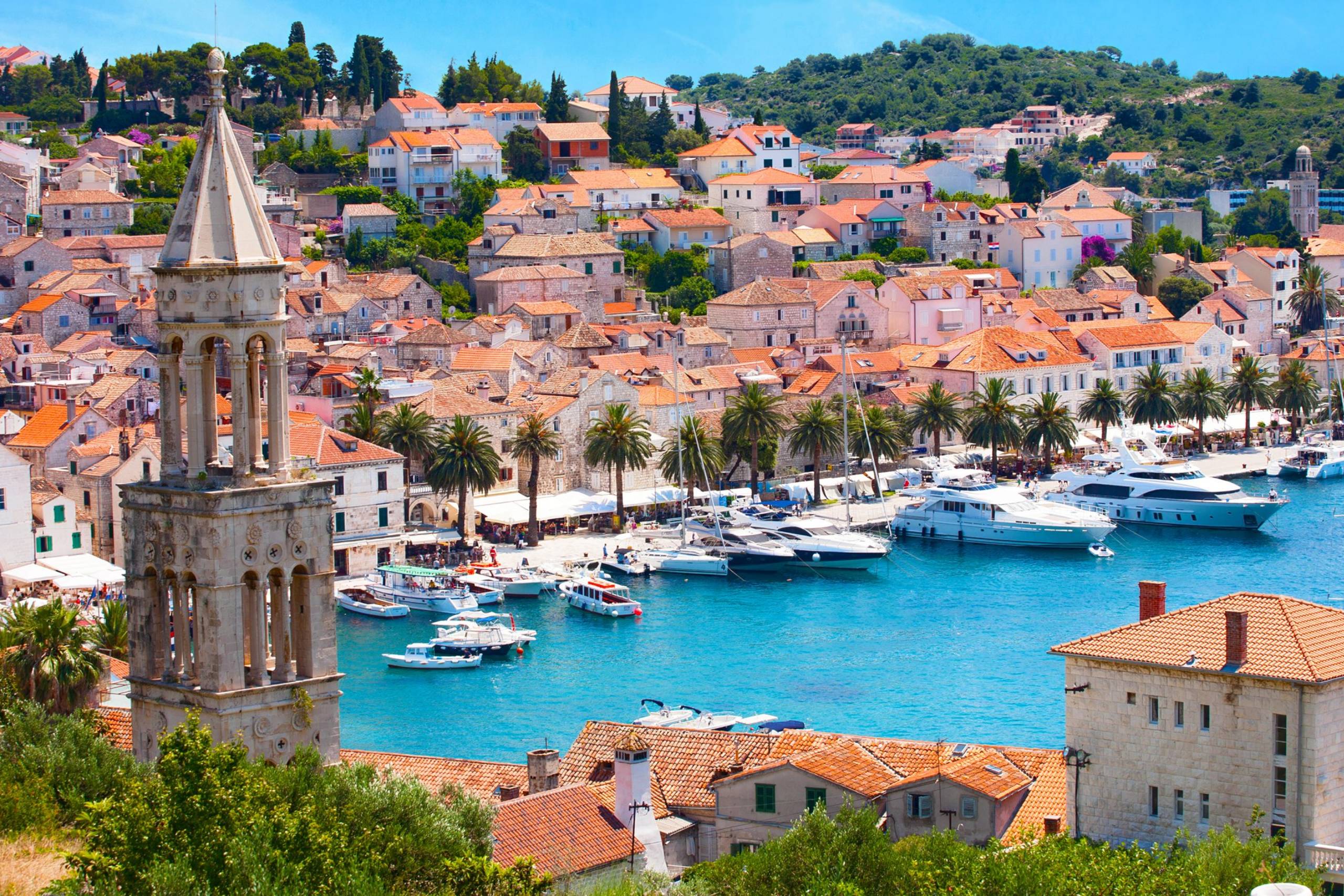
Day 09
Hvar is a sun-splashed rollercoaster of history and hedonism. Its combination of culture and cocktails renders it Croatia’s answer to both Antibes and St Tropez. With 2,800 hours of sunshine a year, it’s the country’s sunniest, and chicest, spot. It's also part of an informal club of the world's finest islands, which includes Bora Bora, Bali and Capri. You get the picture.
Days commence with caffè macchiatos in St Stephen’s Square. The setting is impossibly grand, as Venice turned Hvar into a marble-lined masterpiece of medieval finery. Like the French Riviera, celebrities from the silver screen wander around here with sunny abandon - Brad and George are fans. Those visitors in search of superyacht seclusion may hit the nearby island of Šcedro. It boasts over 20 tiny bays… and a population of just 1.
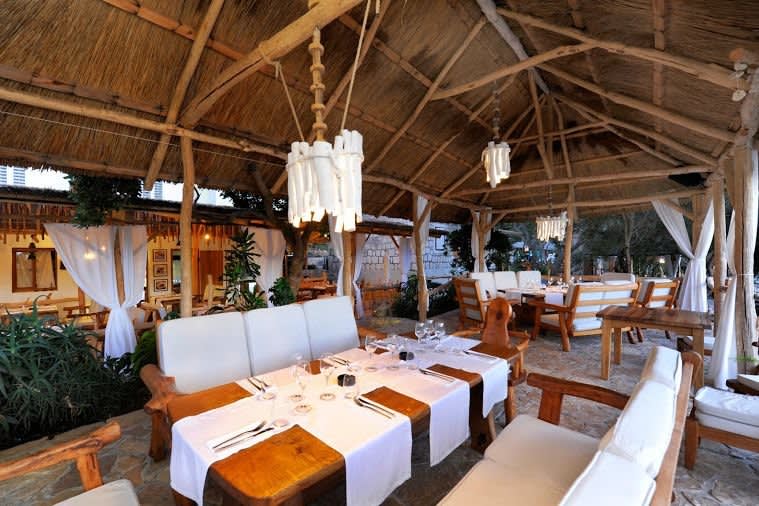
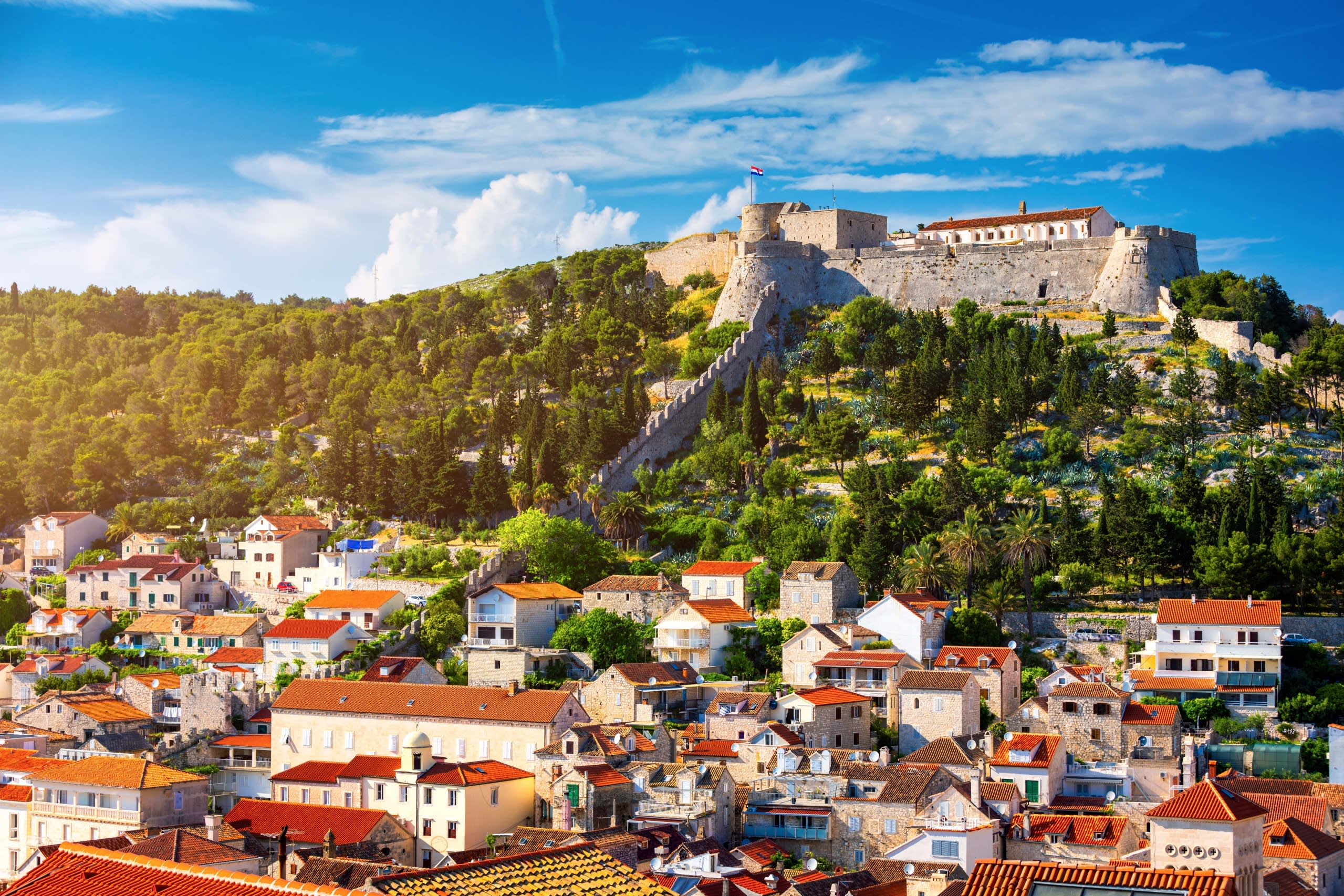
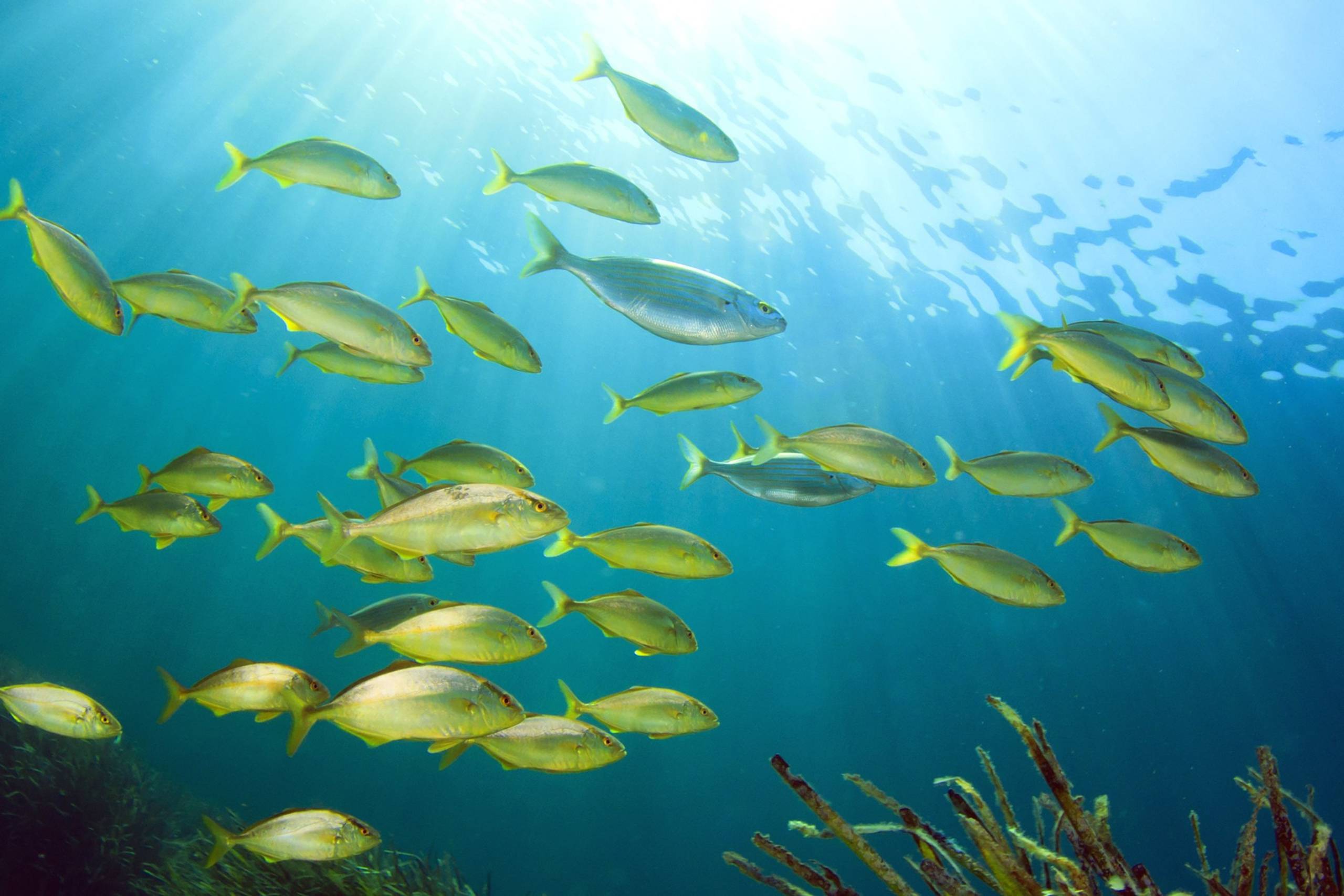
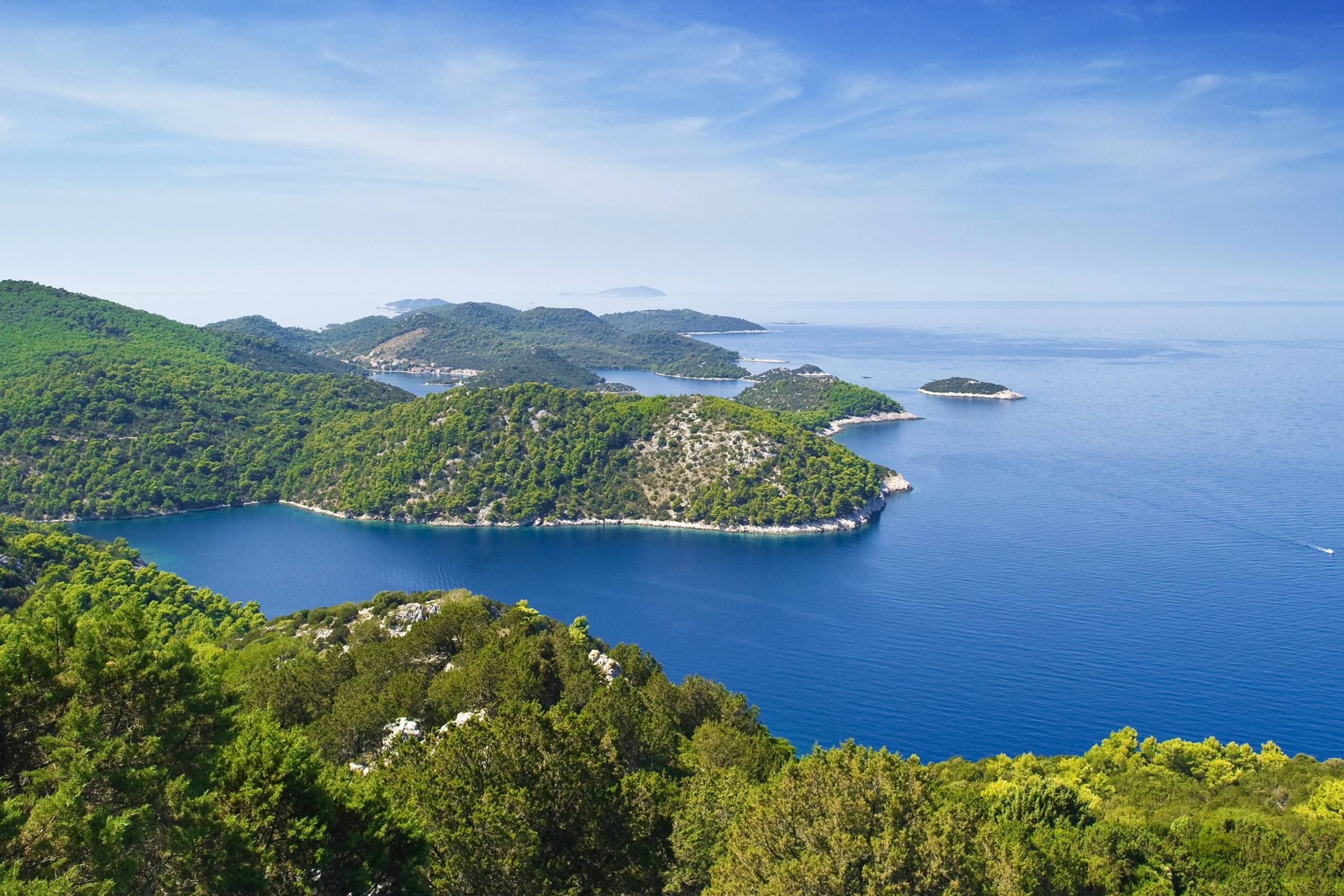
Day 10
Day-trippers don’t do Lastovo. Floating more than 100km from the Croatian mainland, this far-flung island chain is reserved for serious yachtsmen. The strategic archipelago was off-limits to tourists until 1989. Superyachts still have these sun-blessed shores almost exclusively to themselves.
The pristine Lastovo archipelago numbers 44 petite islands. Many are cloaked with strawberry trees, Holm oak and Aleppo pine. Hiking trails traverse their interiors. State-protected coastlines are notched with pretty ports, deep blue bays and isolated coves.
Uninhabited isles make up much of the archipelago. Under the waves, expect sightings of orange coral and slipper lobsters. Bigger marine friends include bottlenose dolphins, loggerhead sea turtles and the Mediterranean monk seal.
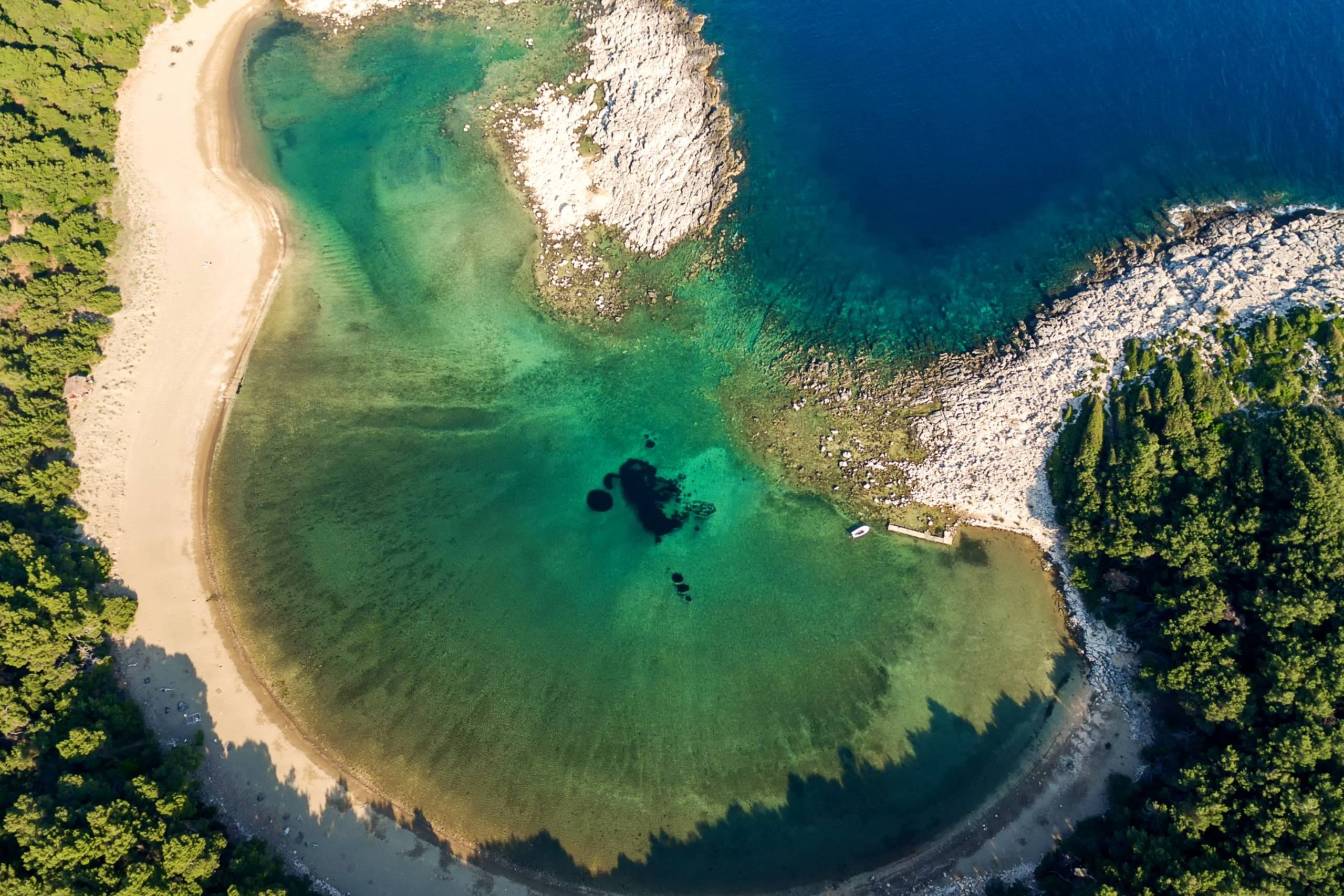
Day 11
Mljet is an evergreen dream. Imagine an impossible wiggle of forests protecting a chain of lake-like bays. Tiny islets lie scattered in the shallows. One houses a monastery, others have remained uninhabited since time began. Best of all, Mljet basks in its very own bath of Adriatic blue. Sail west and it’s next stop Italy.
Around half of this pristine splendour is encased within a National Park. The entrance gate smacks of a secret garden. Tiptoe through a ruined Roman fort into an enchanted forest where deer, mongoose and rare eagle owls roam free. Unlike most Croatian islands, Mljet is simply massive. Just 1,000 people reside on 100km2 of emerald green land.
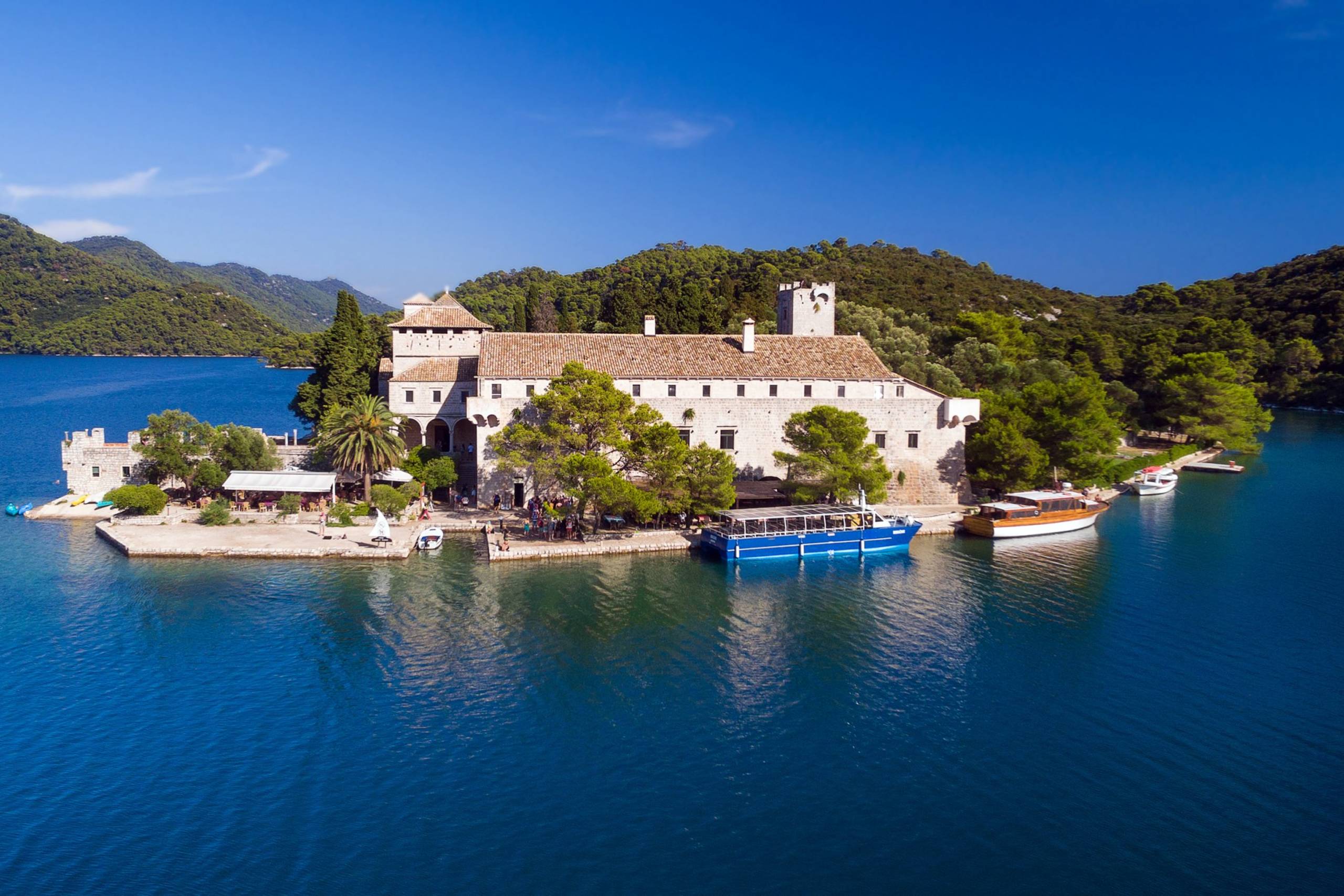
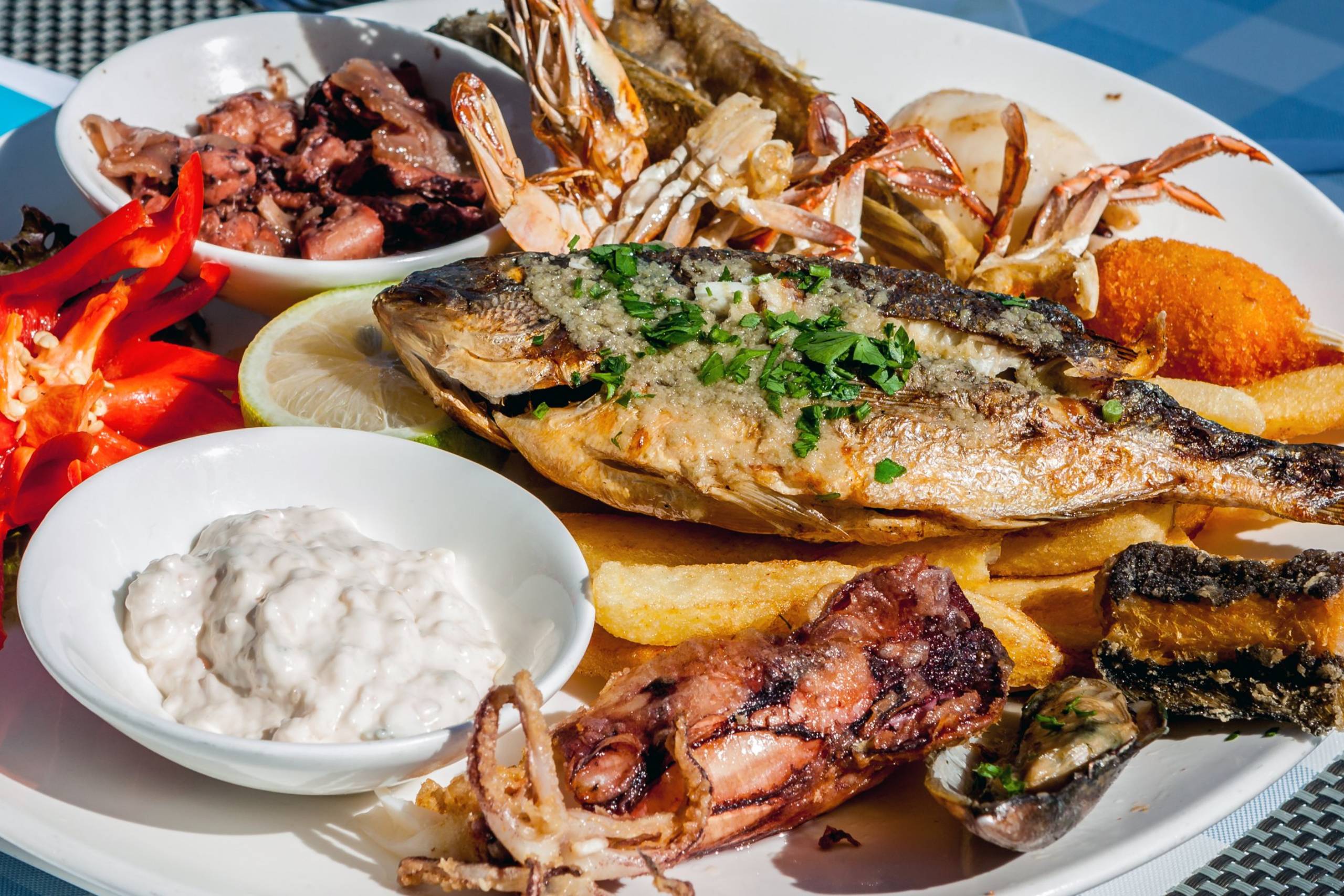
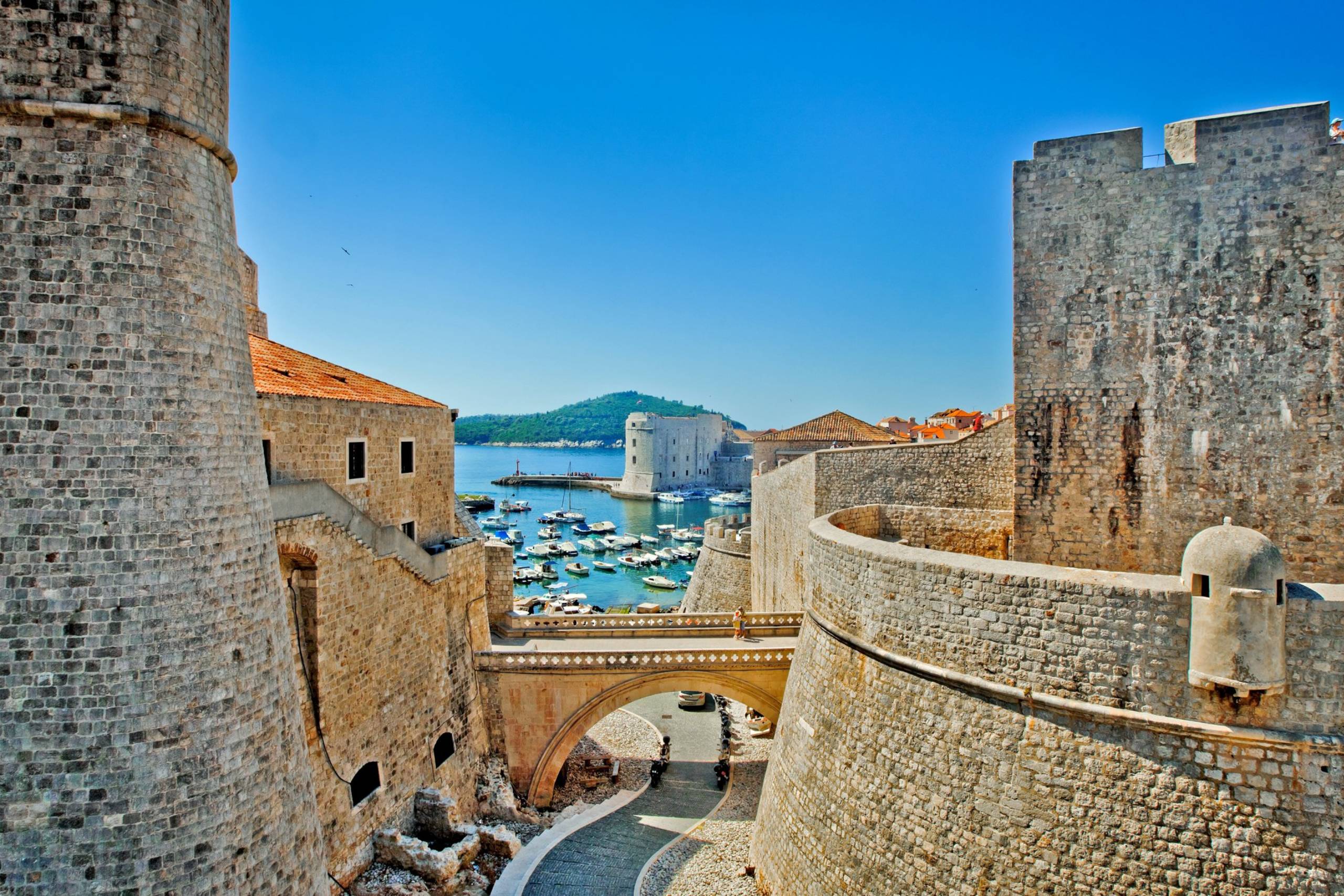
Day 12
In the morning the yacht will depart for Croatia.You will stop in Cavtat to clear customs and then everyone can enjoy a swim in the beautiful bay. Once ready the yacht will
depart for Dubrovnik to anchor in front of the beautiful walled town.
Go ashore to explore Dubrovnik, a UNESCO World Heritage Site, this Dalmatian port is one of the world’s most visually arresting cities. It's Old Town is ringed by stone walls, turrets and towers, like a Disney-esque redoubt. Within Dubrovnik’s Old Town, Stradun Street bisects a warren of marble lanes. Elizabeth Taylor and Richard Burton sipped Champagne alfresco here in the 1970. Today the town draws likes of Francis Ford Coppola and Beyoncé. As George Bernard Shaw wrote: ‘Those who seek paradise on Earth should come to Dubrovnik’. Lord Byron called this enchanting city 'the pearl of the Adriatic'.
The night could be spent at anchorage or in the port of Dubrovnik.
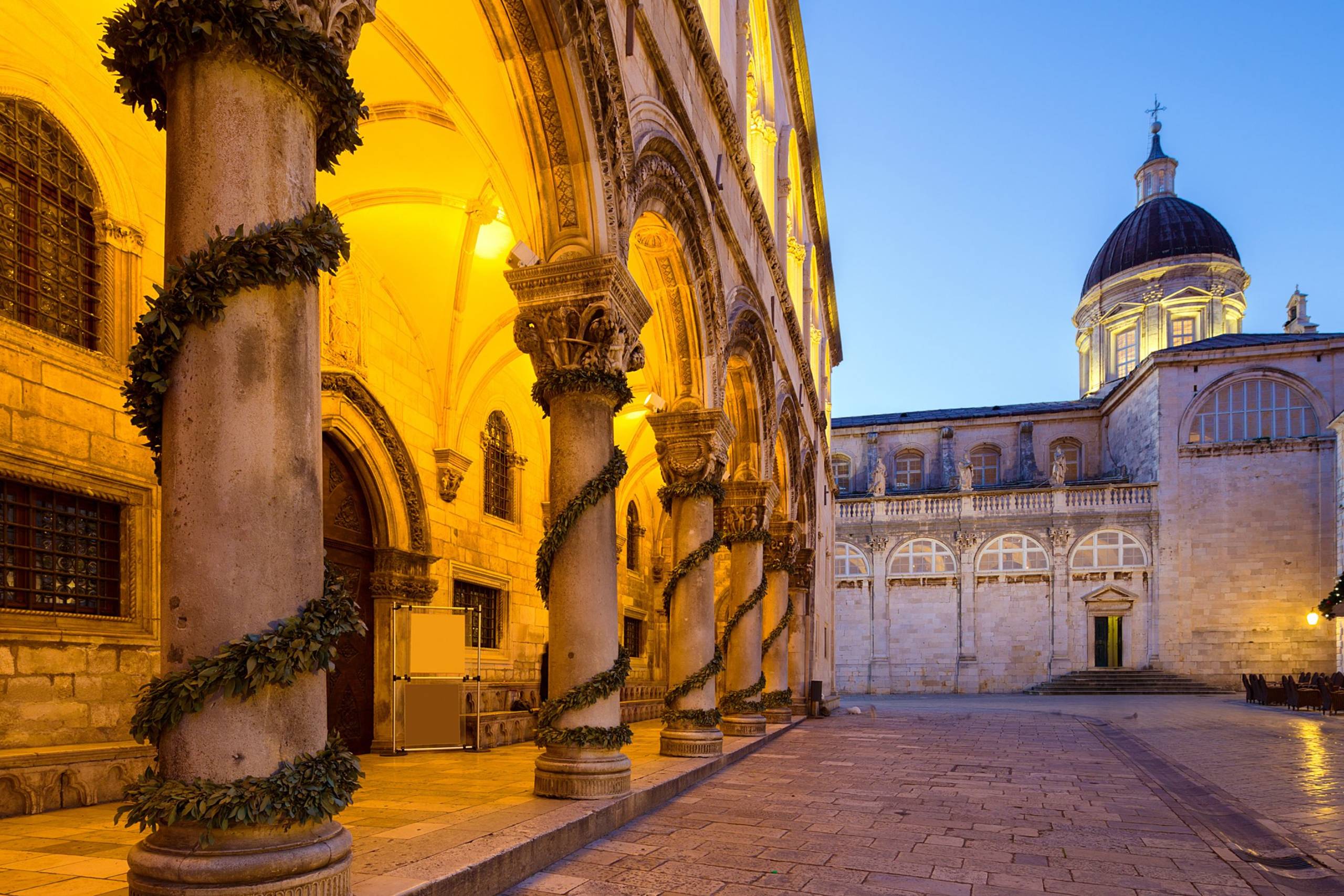
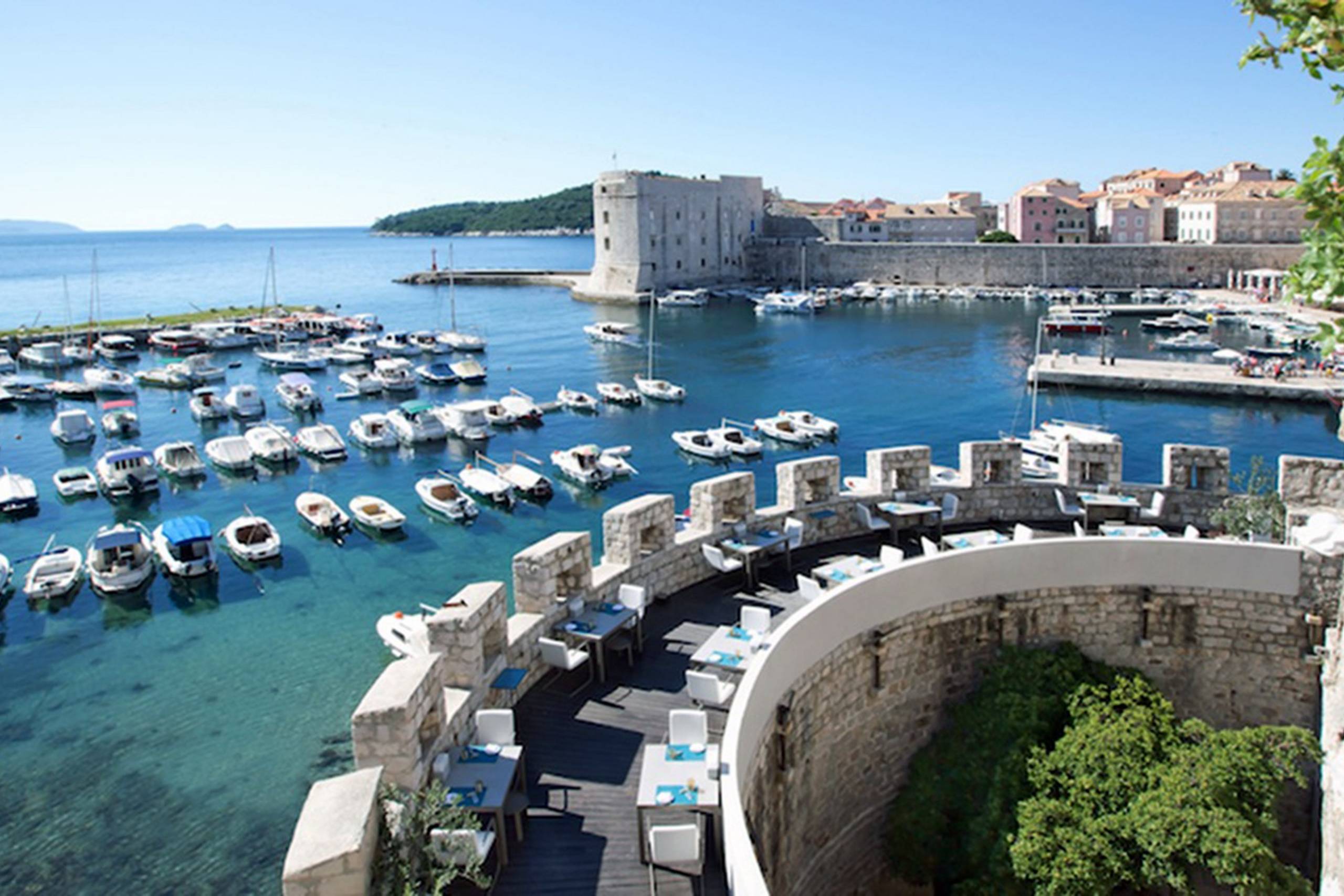
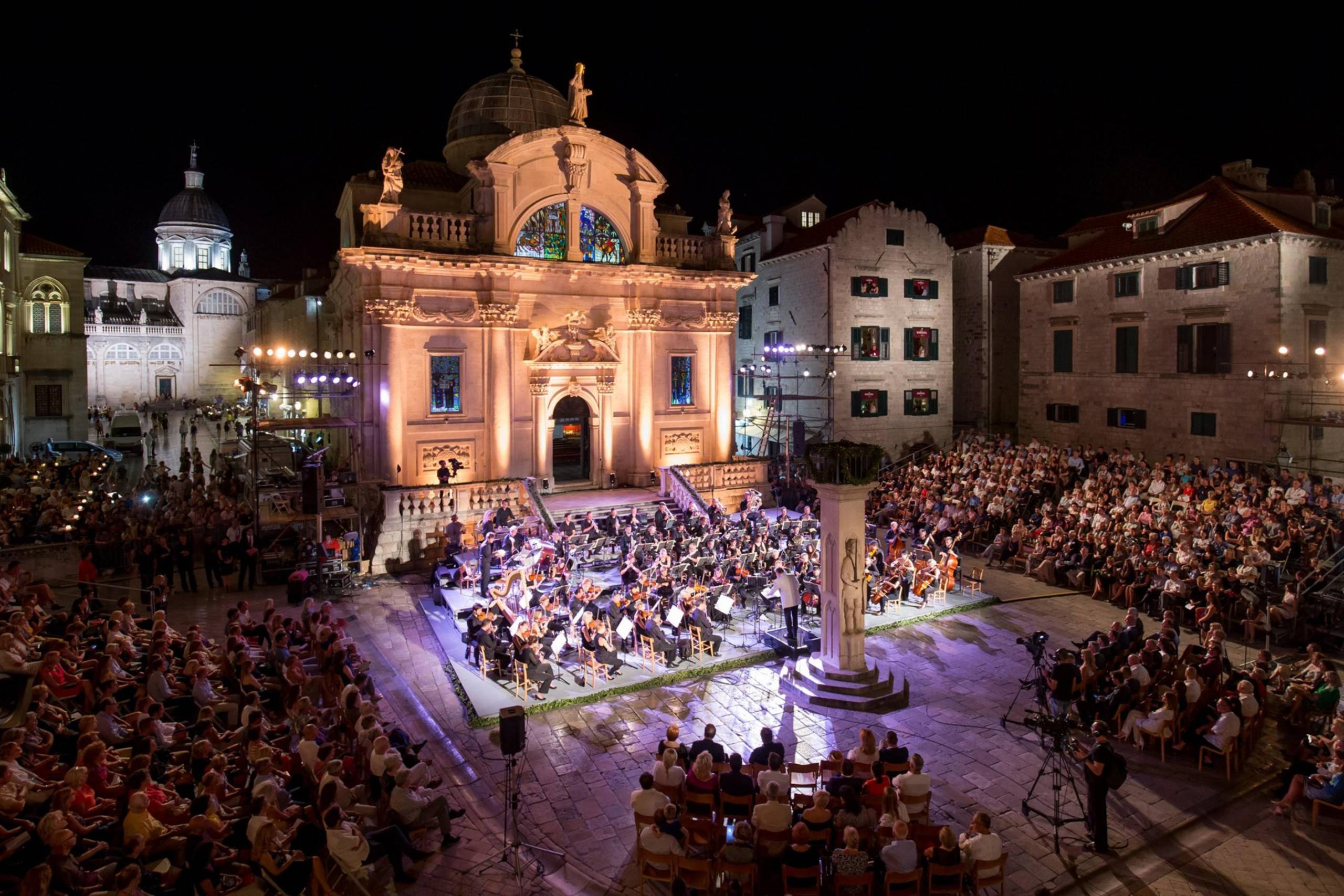
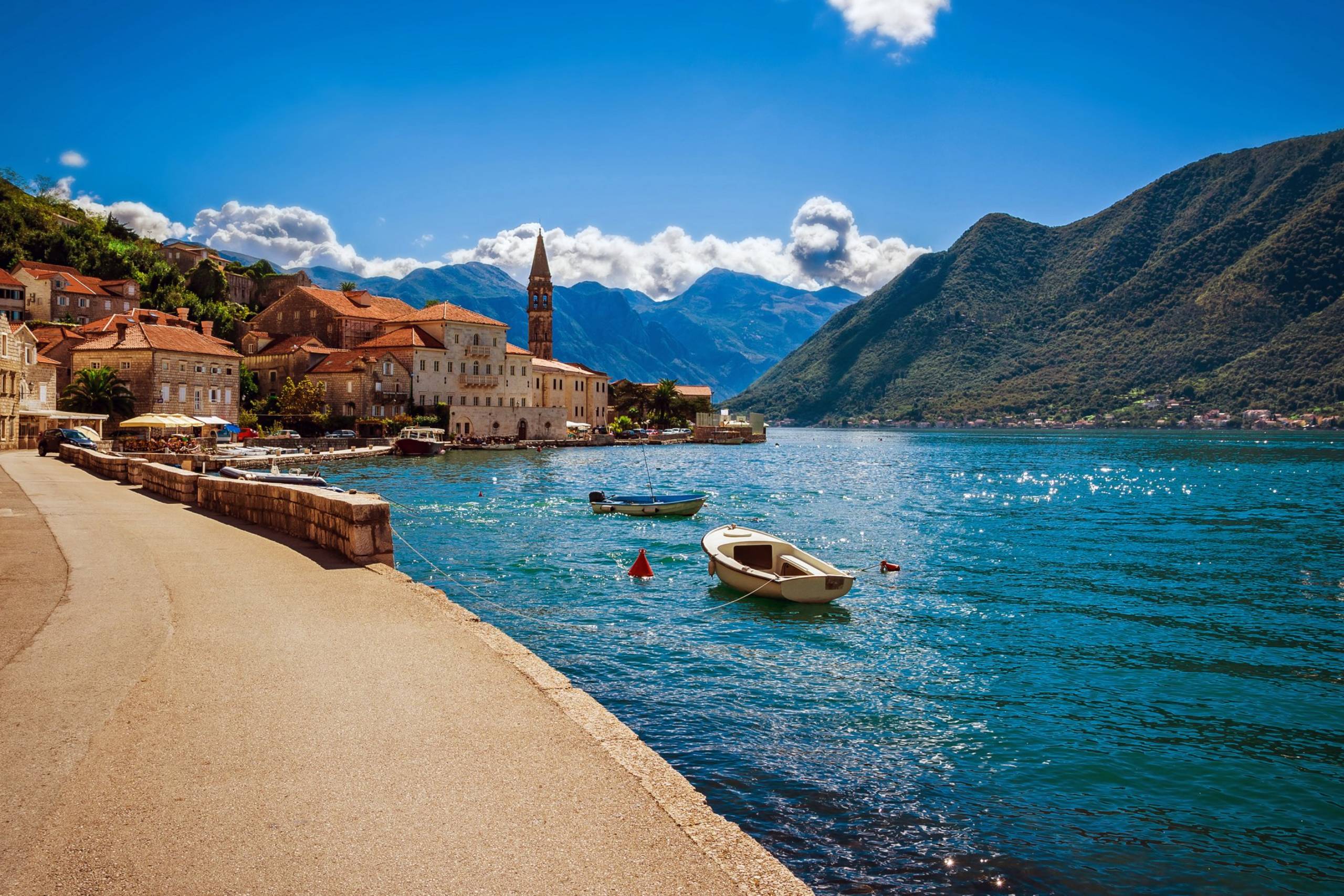
Day 13
Embark Troyanda in Kotor and once everyone is settled on board the yacht will depart for Croatia. You will probably be keen to anchor into the magnificent bay of Kotor, that resembles the fjords of Norway, for a swim and then a delicious lunch and some watersports.
You will stop in Cavtat to clear customs. Once ready the yacht will depart for Dubrovnik to anchor in front of the beautiful walled town.
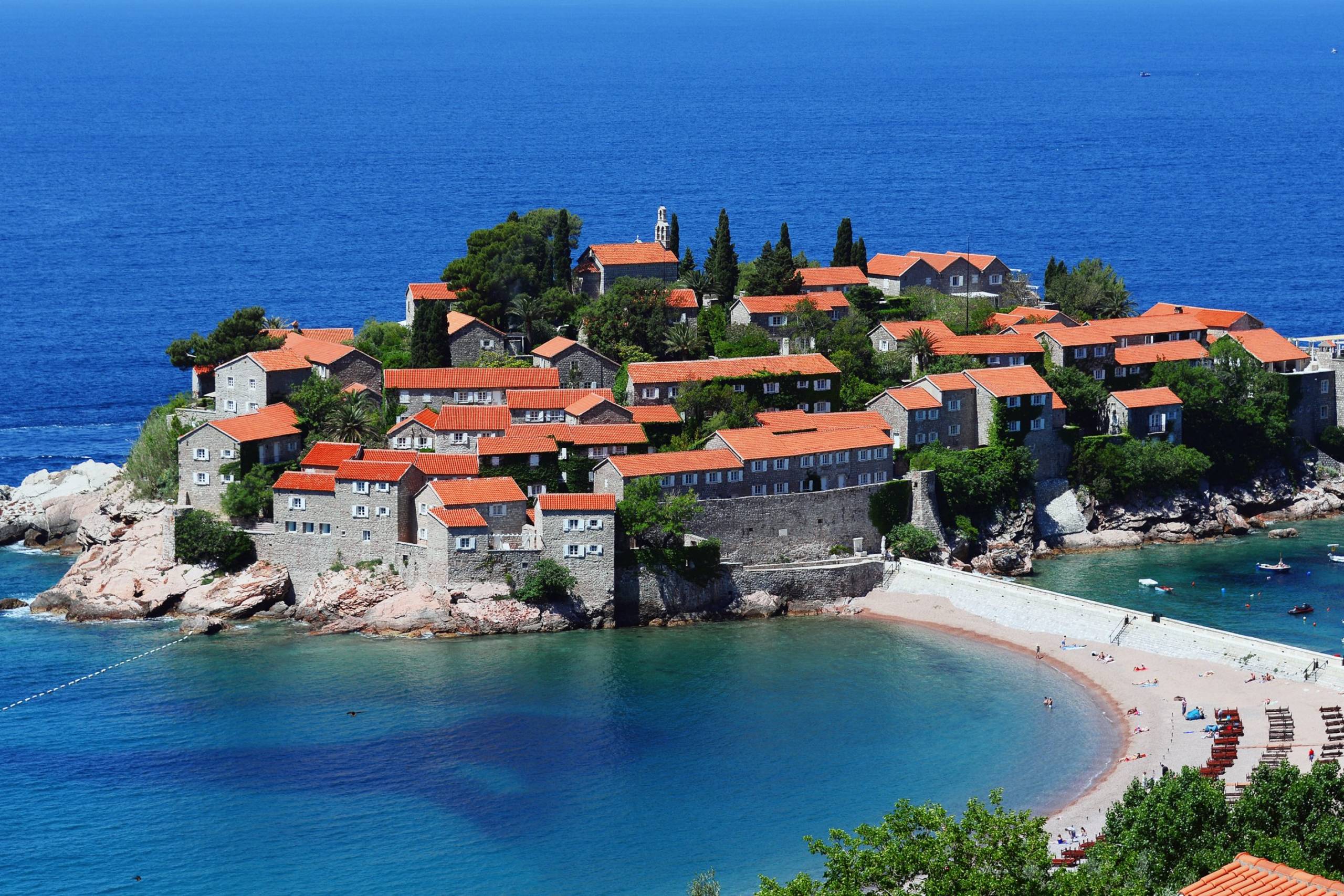
Day 14
Sveti Stefan is Montenegro’s shining star. This picturesque fishing port – linked to the mainland by a beachy isthmus – once attracted A-list celebrities from Kirk Douglas to Sophia Loren. The resort was recently reinvented as a five-star boutique village. Moor up for the evening passeggiata by Miločer beach, which is backed by a forest of Lebanese cedar.
Some visitors frequent Montenegro solely for its beaches. These honey-hued crescents stretch all the way to Albania in a near unbroken chain. Becici is an award-winning sweep of sand that runs for 1,800m. Perazica beach is enveloped by cliffs so sheer than only a superyacht or a sturdy set of legs can reach it.
Venice is a jewel-like cluster of 117 islands scattered across an Adriatic lagoon. Its historical centre, rising majestically from the marshy seabed, defies gravity. Handsome façades trim its labyrinth of canals. These waterways hum night and day, constantly criss-crossed by a parade of gondolas, motorboats and pleasure craft. This enchanting corner of Italy is a floating fairyland.
Marco Polo, Antonio Vivaldi and Giacomo Casanova – respectively Italy’s most renowned explorer, composer and lover– were all born in this watery kingdom. Venice is blessed with enough international art, world-class opera and romantic vistas exquisite to make even these worldly personas weep with joy.


Venice
MuranoWitness the glassmaking of Murano in person to appreciate the expert techniques used to shape and form these. One of the standouts among the most unique, original creations are glass objects imitating precious stones.

Venice
LidoIts groomed shellac beaches, scattering of art nouveau buildings and summering Venetians sipping prosecco beneath candy-striped awnings make it an interesting diversion on a hot day.

Venice
Acquerello RestaurantWith an outdoor terrace by the water’s edge, diners have a view over the lagoon and of St Mark’s Square while enjoying fine Italian cuisine made with a contemporary flair.
Rovinj was essentially Italian until 1947. Today it remains a cosmopolitan Venice on the Adriatic Sea. Its waterfront promenade – the Riva – is one long procession of gelaterie. Its gastro-speciality is frutti di mare.
The coastline around Rovinj crumbles into an archipelago of 22 island gems. And just north lies nature’s gift to superyacht guests. The 35km-long Limska Fjord cuts into Istria like a watery blade. The coast is an undulating green carpet of oak and ash, but it’s what lies under the waves than counts. The oxygen-rich estuary is watered by a score of rivers, and its stocks of oysters, scallops and mussels are second to none.

Pula has been the capital of Istria for 2,000 years. And it shows. One of the world’s greatest Roman amphitheatres commands this romantic seaside town. Thankfully, summer entertainment has switched from gladiators, lions and bears to alfresco opera, theatre and film. The Temple of Augustus forms the axis of Pula’s seafront promenade. The monument - and surrounding gelaterias - are as good as any in Rome.
A short sail from the Pula shore, in the Brijuni Islands translucent beach-backed bays surround an archipelago covered with forests and forts. Roman emperors holidayed here. A century ago Viennese business magnate Paul Kupelwieser established a casino, a yacht harbour and Croatia's first golf course. In the swinging 1960s Gina Lollobrigida and Sophia Loren turned the archipelago into Croatia’s St Tropez.

The prize for the prettiest city in Dalmatia goes to Zadar. Its waterfront promenade is lined by belle epoque mansions. And it has more restaurant terraces than Venice. Inside Zadar’s old town, the streets are literally paved with marble. here the port’s 3,000 years of history shine through. Roman columns rise next to Romanesque churches. Shops selling local wine and jewellery sit next to branches of La Furla and Max & Co.
Offshore lies an Edenic island chain. Molat is a maquis-covered wilderness for hikers and bikers. Ulgjan is a famed for fishing and olive oil. Further out to sea, Silba is smart, arty and car-free. Premuda boasts undersea caverns and an eerie shipwreck. Neighbouring Olib is an island speck surrounded by sand.

Šibenik has the luckiest location in all Dalmatia. In times past, the town grew wealthy from the watermills in the nearby Krka National Park. Its honey-hued streets are richly lined with marble stones, smiling cherubs and a UNESCO-protected Cathedral. A saunter up to the ruined St Anne Fortress is a perfect stretch for sea legs. The view spans over the 220 forested islands in Šibenik’s bay.
A loop of island idylls stretches from Šibenik to Zadar. The clear blue bays of Žut make for a Robinson Crusoe escape. Car-free Kaprije offers local wines and olives, plus slow-cooked lamb raised in the maquis-covered hills. Krapanj is famed for fiery rakia, while Zlarin is renowned for squid and shellfish baked in vine leaves.

When Roman Emperor Diocletian built his retirement home, he chose Dalmatia’s sunniest and most sheltered bay. His white marble mansion now forms the historic heart of modern Split. Over 100 restaurant terraces radiate out from the Roman ruins, rendering Croatia’s second city one big pavement café. Superyacht parties have been known to maintain an alfresco bar table for hours at a time, as members hit boutiques, markets and galleries before casting off.
Diocletian’s garden now hosts Split’s daily market. Here 200 local stallholders sell cherries, honey and legs of prosciutto to superyacht chefs moored in the bay. Offshore, the island of Solta is awash with olive groves and orchards of citrus, vines and figs. Its 60km of coastline is a blue-green mosaic of bays, beaches, cliffs and creeks.


Split
GolfRetox with a game of golf on the only course on Split. A casual family friendly non-frills place full of soul.

Split
Klis Fortress VisitA Game of Thrones filming location situated in a dramatic mountain pass.

Split
Diocletian’s Palace & Roman Ruins of SalonaBest enjoyed late afternoon, take a guided walking tour of Split to see Diocletian’s Palace and the Roman Ruins of Salona.
Halfway between Croatia and Italy, Vis is a heavenly cradle of culture, seafood and fabulous wine. A single daily ferry runs this far out into the Adriatic, so only visitors with their own yachts frequent these crystal clear waters.
With patrons of such calibre, Vis’s restaurants are gourmet sensations. Val serves scorpion fish and local lobster under a lemon grove. Maître d' Goran is unerringly tight-lipped about his celebrity clientele.
More isolated still is the island of Biševo. It hosts only 11 residents, a handful of vineyards and one very cool cave. Take the tender to the Blue Cave around lunchtime and dive right in. Rays of sun, ethereal shadows and a white coral seabed combine in a surreal lightshow.


Vis
DivingThere are 20 locations in the depths of the sea with sunken planes, sailing-ships, submarines and war-ships in the surrounding of Vis.

Vis
Blue Grotto in Vis, CroatiaExperience the otherworldly glow of the mysterious blue grotto, a sea cave off the Dalmatian coast. At moments throughout the day, a blue light casts the cave into iridescence.

Vis
FishingThe clear waters of the Adriatic sea are perfect for fishing between Vis and Kornati Islands. Meet with one of the many fisherman to learn from the local experts.
The largest of Dalmatia’s islands, Brač is best known for Zlatni Rat, its glorious ‘Golden Cape’. Croatia’s most famous beach is a triangular 500m peninsula that juts out from the pine-clad coast. Its white pebble shore forms a striking contrast with the translucent turquoise waves.
What beats the beach is the postcard-perfect panorama from above. At 780 metres, Brač’s Vidova Gora peak is the highest in the Adriatic, offering vistas over Zlatni Rat as well as the nearby island of Hvar. The descent on foot is equally alluring, where olive groves and rippling vineyards tumble back down the sea.

Hvar is a sun-splashed rollercoaster of history and hedonism. Its combination of culture and cocktails renders it Croatia’s answer to both Antibes and St Tropez. With 2,800 hours of sunshine a year, it’s the country’s sunniest, and chicest, spot. It's also part of an informal club of the world's finest islands, which includes Bora Bora, Bali and Capri. You get the picture.
Days commence with caffè macchiatos in St Stephen’s Square. The setting is impossibly grand, as Venice turned Hvar into a marble-lined masterpiece of medieval finery. Like the French Riviera, celebrities from the silver screen wander around here with sunny abandon - Brad and George are fans. Those visitors in search of superyacht seclusion may hit the nearby island of Šcedro. It boasts over 20 tiny bays… and a population of just 1.


Hvar
LaganiniOver the last 50 years, Laganini has become one of the most preferred destinations for gourmet cuisine lovers. Besides the exotic seafood restaurant, it has the most “chilled” lounge bar with direct access to the beach.

Hvar
Fortica SpanjolaFortress Fortica was built above old city in the 16th century. The climb up to the fort is gentle and pleasant and the views from the top are majestic.

Hvar
FishingBig game fishing between Vis and Hvar
Day-trippers don’t do Lastovo. Floating more than 100km from the Croatian mainland, this far-flung island chain is reserved for serious yachtsmen. The strategic archipelago was off-limits to tourists until 1989. Superyachts still have these sun-blessed shores almost exclusively to themselves.
The pristine Lastovo archipelago numbers 44 petite islands. Many are cloaked with strawberry trees, Holm oak and Aleppo pine. Hiking trails traverse their interiors. State-protected coastlines are notched with pretty ports, deep blue bays and isolated coves.
Uninhabited isles make up much of the archipelago. Under the waves, expect sightings of orange coral and slipper lobsters. Bigger marine friends include bottlenose dolphins, loggerhead sea turtles and the Mediterranean monk seal.

Mljet is an evergreen dream. Imagine an impossible wiggle of forests protecting a chain of lake-like bays. Tiny islets lie scattered in the shallows. One houses a monastery, others have remained uninhabited since time began. Best of all, Mljet basks in its very own bath of Adriatic blue. Sail west and it’s next stop Italy.
Around half of this pristine splendour is encased within a National Park. The entrance gate smacks of a secret garden. Tiptoe through a ruined Roman fort into an enchanted forest where deer, mongoose and rare eagle owls roam free. Unlike most Croatian islands, Mljet is simply massive. Just 1,000 people reside on 100km2 of emerald green land.


Mljet
mljet by bikeExplore the Croatian island of Mljet on two wheels by traditional bike or e-bike. cycle around the lake and visit the small monastery in its centre.

Mljet
Restaurant Konoba OgigijaExperience local Mediterranean food. Enjoy a wide variety of fresh meats, grilled seasonal vegetables and regional wines met with pleasant views on the Port.
In the morning the yacht will depart for Croatia.You will stop in Cavtat to clear customs and then everyone can enjoy a swim in the beautiful bay. Once ready the yacht will
depart for Dubrovnik to anchor in front of the beautiful walled town.
Go ashore to explore Dubrovnik, a UNESCO World Heritage Site, this Dalmatian port is one of the world’s most visually arresting cities. It's Old Town is ringed by stone walls, turrets and towers, like a Disney-esque redoubt. Within Dubrovnik’s Old Town, Stradun Street bisects a warren of marble lanes. Elizabeth Taylor and Richard Burton sipped Champagne alfresco here in the 1970. Today the town draws likes of Francis Ford Coppola and Beyoncé. As George Bernard Shaw wrote: ‘Those who seek paradise on Earth should come to Dubrovnik’. Lord Byron called this enchanting city 'the pearl of the Adriatic'.
The night could be spent at anchorage or in the port of Dubrovnik.


Dubrovnik
ancient city tourAccompanied by a private guide, explore the exquisitely well-preserved old town of Dubrovnik with its Baroque cathedral and St Blaise church, Sponza Palace and Gothic Rector Palace.

Dubrovnik
Restaurant 360Set within the great walls of Dubrovnik with impressive views over the port, 360º effortlessly blends its historical setting with a progressive, forward-thinking menu.

Dubrovnik
Summer FestivalThe month of August is Dubrovnik’s summer festival, where music and theatre productions can be seen around the town and in the streets.
Embark Troyanda in Kotor and once everyone is settled on board the yacht will depart for Croatia. You will probably be keen to anchor into the magnificent bay of Kotor, that resembles the fjords of Norway, for a swim and then a delicious lunch and some watersports.
You will stop in Cavtat to clear customs. Once ready the yacht will depart for Dubrovnik to anchor in front of the beautiful walled town.

Sveti Stefan is Montenegro’s shining star. This picturesque fishing port – linked to the mainland by a beachy isthmus – once attracted A-list celebrities from Kirk Douglas to Sophia Loren. The resort was recently reinvented as a five-star boutique village. Moor up for the evening passeggiata by Miločer beach, which is backed by a forest of Lebanese cedar.
Some visitors frequent Montenegro solely for its beaches. These honey-hued crescents stretch all the way to Albania in a near unbroken chain. Becici is an award-winning sweep of sand that runs for 1,800m. Perazica beach is enveloped by cliffs so sheer than only a superyacht or a sturdy set of legs can reach it.

Yachts For Charter
let's chat.
Get in touch with one of our teams around the world
Where you'll find us
Monaco — MC
+377 93 50 12 12London — UK
+44 20 7584 1801Fort Lauderdale — US
+1 954 278 3970Auckland — NZ
+64 9 281 5133Contact us
[email protected]Length
Price per week
Dates
Size
Length
Price
Price per week
When
Dates
0 Results
SearchLength
Price per week
Build range
Size
Length
Price
Price per week
Year
Build range
0 Results
Search0 Results
SearchCharter AI can make mistakes. Check important info. See Privacy Policy.
